Page 249 of 302

M N
co
a:
co
,...., \!) 1.1'1
N 1.1'1 ,....,
Wheels
Model/ Tire designation Tire pressure
engine Normal load Maximum load
(up to 3 people)a)
front rear front rear
PSI
235/60 Rl8 103H
29 Q5: All Season
2.0L 235/55 Rl9 101H
4 cylinders All Season
30
and
Q5: 235/55 Rl9 101W 2
9 High Performance
3.0L
6 cylinders 255/45 R20 101W
29 High Performance
255/45 R20 101W
3
9 SQ5:
High Performance
3.0L
6 cylinders 255/40 R21 102Y XL
41
High Performance
a) 2 p
eopl e in th e fron t, 1 p ers on i n th e re arr
A WARNING
Please note the important safe
ty precautions regarding tire pressure
¢ page 245 and load
limits
¢ page 247 .
Tires and vehicle load limits
There are limits to the amount of
load or weight that any vehicle
and any tire can carry. A vehicle
that is overloaded will not handle
well and is more difficult to stop.
Overloading can not only lead to
lo ss of vehicle control , but can al
so damage important parts of the
vehicle and can lead to sudden
tire failure, including a blowout
kPA PSI kPA PSI kPA PSI
20 0 29 2 00 32 220 32
2 10 30 210 33 230 33
200 2 9 200
33 2
30 33
2 00 29 2 00 33 230 33
270 39 270 41 280 41
280 36 2
50 41 2 80 42
and sudden deflation that can
cause the vehicle to crash.
kPA
220
230
2 30
230
280
2 90
Your safety and that of your pas
sengers also depends on making
sure that load limits are not ex
c eeded. Vehicle load includes ev
erybody and everything in and on
the vehicle. These load limits are te chnically referred to as the vehi
cle 's
Gross Vehicle Weight Rating
("GVWR") .
The "GVWR " includes the weight
of the basic vehicle, all factory in
stalled accessories, a full tank of
fuel, oil, coolant and other fluids
plus maximum load. The maxi
mum load includes the number of""
247
Page 250 of 302
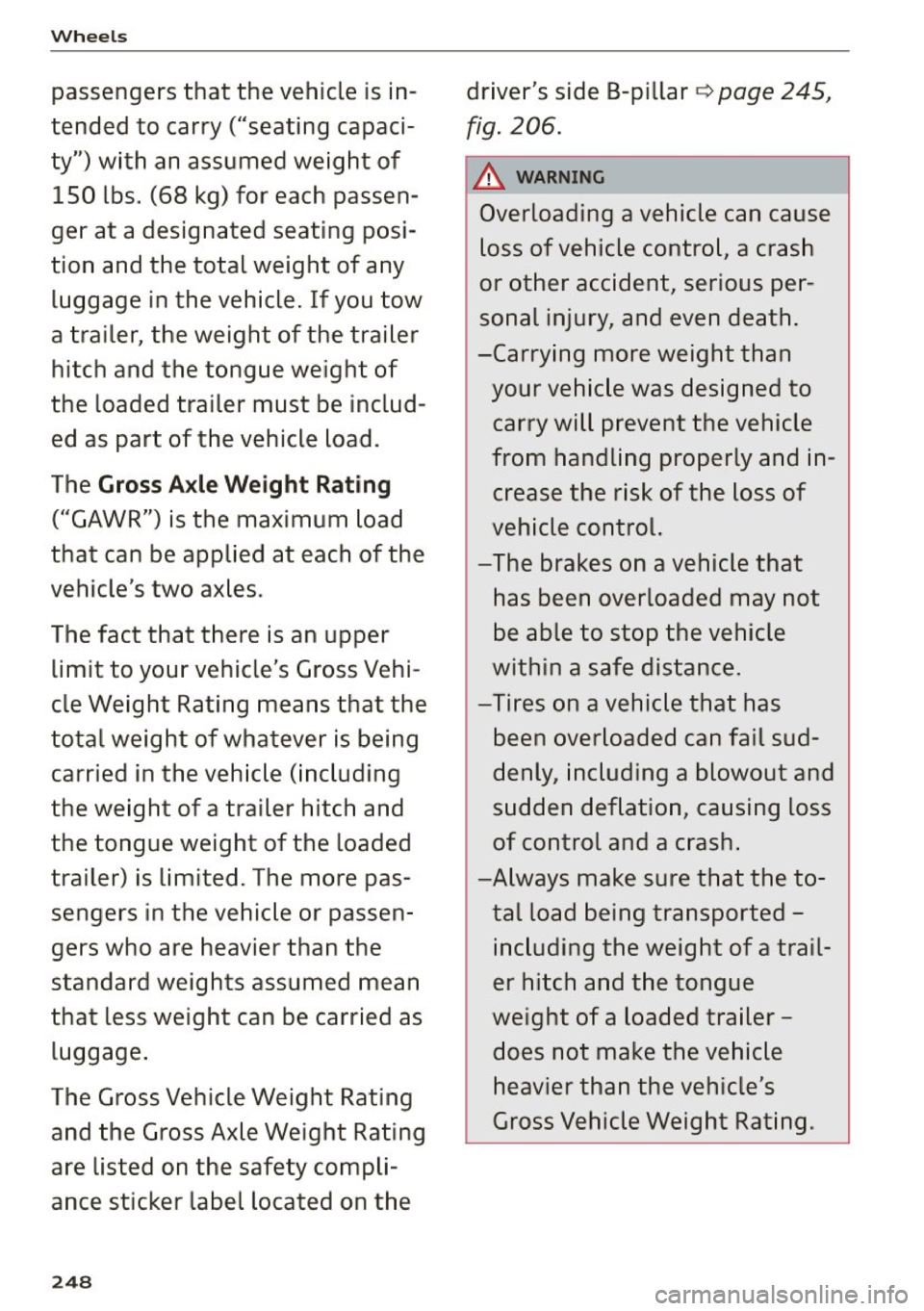
Wheels
passengers that the vehicle is in
tended to carry ("seating capaci
ty") with an assumed weight of 150 lbs. (68 kg) for each passen
ger at a designated seating posi
tion and the total weight of any
luggage in the vehicle. If you tow
a trailer, the weight of the trailer
hitch and the tongue weight of
the loaded trailer must be includ
ed as part of the vehicle load.
The
Gross Axle Weight Rating
("GAWR") is the maximum load
that can be applied at each of the
vehicle's two axles.
The fact that there is an upper limit to your vehicle's Gross Vehi
cle Weight Rating means that the
total weight of whatever is being
carried in the vehicle (including
the weight of a trailer hitch and
the tongue weight of the loaded
trailer) is limited. The more pas
sengers in the vehicle or passen
gers who are heavier than the
standard weights assumed mean
that less weight can be carried as
luggage.
The Gross Vehicle Weight Rating
and the Gross Axle Weight Rating
are listed on the safety compli
ance sticker label located on the
248
driver's side B-pillar ~ page 245,
fig. 206.
~ WARNING
Overloading a vehicle can cause
loss of vehicle control, a crash
or other accident, serious per
sonal injury, and even death.
-Carrying more weight than your vehicle was designed to carry will prevent the vehicle
from handling properly and in
crease the risk of the loss of
vehicle control.
-The brakes on a vehicle that
has been overloaded may not
be able to stop the vehicle
within a safe distance.
-Tires on a vehicle that has
been overloaded can fail sud
denly, including a blowout and
sudden deflation, causing loss
of control and a crash.
-A lways make sure that the to
tal load being transported -
including the weight of a trail
er hitch and the tongue
weight of a loaded trailer -
does not make the vehicle
heavier than the vehicle's
Gross Vehicle Weight Rating.
Page 251 of 302

M N
co
a:
co
,...., \!) 1.1'1
N 1.1'1 ,....,
Determining correct load
limit
Use the example below to calcu
late the total weight of the pas
sengers and luggage or other
things that you plan to transport
so that you can ma ke sure that
your vehicle will not be overload ed .
Steps for Determining Correct
Load Limit
1 . Locate the statement "THE
COMBINED WEIGHT OF OCCU PANTS AND CARGO SHOULD
NEVER EXCEED XXX KG OR XXX
LBS"on your vehi cle's pla card
(tire inflation pressure label)
¢ page 245 , fig. 206.
2 . Determine the combined
weight of the driver and pas
sengers that will be riding in
your vehicle.
3 . Subtract the combined weight
of the driver and passengers
from
"XXX " kilograms or "XXX"
pound s shown on the sticker
¢ page 245 , fig. 206 .
4. The resulting figure equals the
available amount of cargo and luggage load capacity. For ex
ample, if the
" XXX" amount
equals 1400 lbs. and there will
Wheels
be five 1 SO lb s. passenger s in
your vehicle, the amount of available cargo and luggage load capa city is 650 lb s.
(1400-750 (5 X 150) = 650
lb s.)
5. Determine the combined
weight of luggage and cargo
being loaded on the vehicle .
That weight may not safely e x
c eed the available cargo and
luggage load capa city cal culat
ed in Step 4 .
6. If your vehicle will be towing a trailer, load from your trailer
will be transferred to your vehi
cle. Con sult thi s manual to d e
termine how this redu ce s the
available cargo and luggage load capacity of your vehicle .
.,.Check the tire sidewall
(¢ page 235 , fig. 204) to deter
mine the designated load rating
for a specific tire.
Wheel bolts and rims
Wheel bolts
W heel bolts mus t be clean and loose n/tighten
easily .
Rims
Rims with a bo lted r im ring* or with bo lt ed wheel
cove rs* cons ist of multi ple p ieces . These compo
nents were bolted together using specia l bolts
and a spec ia l procedu re . You must not repa ir or
disassemb le th em
i::> Li::,. . ..,.
249
Page 252 of 302

Wheels
A WARNING
Wheel bolts that are tightened or repaired in
correctly can become loose and resu lt in loss
of vehicle control , which increases the risk of
an acc ident. For the correct tightening specifi
cat ion, refer to
c:> page 261, After changing a
wheel.
- Always keep the wheel bolts and the threads
in the wheel hub clean and free of grease.
- Only use wheel bo lts that fit the r im .
- Always have damaged rims repaired by an
authorized Aud i dealer or authorized repair
facility. Never repair or disassemble rims
you rself, because this increases the risk of
an accident.
Winter tires
W inter tires sign ificantly improve the vehicle's
handling when driving in w inter condit ions . Be
cause of the ir construction (width, compo und,
tread pattern), summer t ires prov ide less traction
on ice and snow.
.., Use winte r tir es on all four whee ls .
.., Only use winter t ires that are approved for your
vehicle.
.., Please note that the maximum permitted
speed may be lower with winter tires
c:> .&,.
Your authorized Audi dealer or authorized re
pai r facility can inform you about the maximum
permitted speed for your tires.
.., Check the tire pressure after installing wheels
c:> page 245.
The effectiveness of winter tires is reduced great
ly when the tread is worn down to a depth of
0 .1S7 inch (4 mm). The characteristics of w inter
tires also decrease greatly as the tire ages, re
gardless of the remaining tread.
A WARNING
-Never dr ive faste r than the maximum per
mitted speed for your t ires. This could cause
the tires to heat up too much . Th is increases
the risk of an accident because it can cause
the tire to burst .
250
-Always adapt your driving to the road and
traffic cond itions. Drive carefully and reduce
your speed on icy or slippery roads. Even
w inter t ires can lose traction on black ice.
@ For the sake of the environment
Reinstall summer tires at the appropriate
time, beca use they provide better handling
when roads are free of snow and ice. Summer
tires cause less road noise, tire wear and fuel
consumpt ion.
(D Tips
You can a lso use all season tires instead of
winter tires. Please note that in some coun
tries where w inter t ires are required, only win
ter tires with the
& symbol may be permit
ted.
· Snow chains
Snow chains improve traction in the snow .
.., Only install snow chains on the rear wheels .
.., Check and correct the seating of the snow
chains if necessary after driving a few feet. Fol
low the instruct ions from the manufacture r.
.., Note the maximum permitted speed when dr iv
ing w ith snow chains . Do not exceed 30 mph
(SO km/h) .
Snow cha ins not onl y improve the
driving in w in
ter road conditions , but also the
braking .
Use of snow chains is only permitted with certain
rim/tire combinations due to technical reasons .
Check with a n author ized Audi dealer or author
iz ed repair facility to see if you may use snow
c hains.
Use
fine-mesh snow chains. They must not add
more than 0.53 inch (13.5 mm) in he ight, includ
i ng the cha in lock.
You must remove the chains when driving on
roads that are
free of snow. When roads are free
of snow , snow cha ins can impair hand ling and
damage the tires, and the chains will quick ly be
destroyed. .,.
Page 253 of 302

M N
co
a:
co
,...., \!) 1.1'1
N 1.1'1 ,....,
& WARNING
Using incorrect snow chains or installing snow
chains incorrectly can result i n loss of vehicle
contro l, wh ich inc reases the r is k of an acci
dent.
(D Note
Snow chains can dama ge the r ims/wheel cov
ers * if t he chains come into d irect contact
w it h them . Remove the whee l covers * fir st .
Use coated snow chains.
Low aspect ratio tires
Your Audi is factory-equipped with low aspect ra
tio tires . These tires have bee n thoroughly tested
and been selected specifically fo r yo ur model fo r
the ir supe rb pe rformance, road feel and handling
u nder a va riety o f drivi ng conditions. Ask yo ur au
thor ized Audi de aler for mo re det ail s.
The low aspect ratio of these tires is indica ted by
a numeral of
55 or less i n t he tire's si ze des igna
tion . Th e nu mera l represents the rat io of the
tire's sidewall he igh t in relation to i ts tre ad wid th
expressed in percentage. Convent iona l tires have
a height/wi dth ratio of 6 0 or mo re .
The performan ce of low-a spe ct-rati o tires i s par
ticularly sensitive to improper inflation pre s
sure . It is therefore important that low a spect
ratio tires are inflated to the specified p ressure
and that the inflation pressure is regularly
checked and maintained. Ti re pressures should
be checked at least once a month and always
before a long trip
c:> page 245.
What you can do to avoid tire and rim damage
Low aspect ratio t ires can be damaged more easi
ly by impact with potholes, curbs , gullies or
ridges on the road , par ticu la rly if the t ire is un
de rinflate d.
In order to m inim ize the occurrence of impact
damage to the t ires of your vehicle, we recom
mend that you observe the following precau
tions:
Wheels
- Always ma inta in recommended inflation pres
sures. Chec k your tire pressure every 2,000
m iles (3,000 km) and add a ir if necessa ry .
- Drive carefully on roads with potholes, deep
gu llies o r ridges. T he impact from dr iving
through or over such obstacles can damage
your tires. Impact with a curb may also cause damage to your tires.
-After any impact, immed iate ly inspect your
tires or have them inspected by the nearest au
thorized Audi dealer . Replace a damaged t ire as
soon as poss ible .
- Inspect your tires every 2,000 m iles (3,000 km)
for damage and wear. Damage is no t always
easy to see . Damage can lead to loss o f air and
un derinflation, wh ic h could even tually caus e
t ire failure. If you believe tha t a tir e may have
been dam age d, rep lace the t ire as soon as pos
sible.
- These ti res may wear more quickly tha n oth ers.
- Please also remember that, wh ile these tir es
delive r respo nsive handling, they may ride less
c omfortably and m ake mo re no ise th an ot her
choices .
Reduced performance in winter/cold season
conditions
All tires a re designe d for cer ta in p urpo ses. The
l ow as pect ra tio, ultra high pe rformance tires
o rigi na lly installed on your vehicle are intende d
for maximum d ry and wet road performance and
handling. They are not suitab le f or co ld, snowy or
icy weather conditions. If you dr ive under those
c ircumstances, you shou ld equ ip your vehicle
with all-season or winter tires, wh ich offe r better
t raction unde r those co ndit ions . We suggest you
u se the recommende d snow or all-season tires
spe cified for your veh icle, o r th eir equiva le nt.
Refer to
c:> page 250 for more detailed informa
t io n regarding w in te r tir es.
Uniform tire quality grading
- Tread wea r
- Traction AA A B C
- Temperature ABC
251
Page 254 of 302

Wheels
Quality grades can be found where applicable on
the tire side wall between t read sho ulder and
maximum sect ion w idth
c::> page 235, fig . 204.
For example: Tr ead wear 200 , Tract ion AA, Tem
peratu re
A .
All passenger ca r tires must confo rm to Federal
Safety Req uiremen ts in add it ion to these grades.
Tread wear
The tread wear grade is a comparative rating
based on the wear rate of the tire when tested
unde r controlled conditions on a spec ified gov
ernment test course.
For examp le, a t ire graded 150 would wear one
and one half ( 1 1/2) t imes as well on the govern
ment course as a tire graded 100 .
The relat ive performance of t ires depends upon
the actua l conditions of their use, however, and
may depart significantly from the norm due to
variations i n driving hab its, service practices and
d iffe rences in road character istics and clima te.
Traction
The traction grades, from highest to lowest, are
AA, A , Band
C. Those grades represent the tire's
ab ility to stop on wet pavement as measu red u n
de r controlled cond it ions on spec ified govern
ment test su rfaces of asphalt and concrete. A tire
marked C may have poor traction performance
c::> &_ .
Temperature
The temperature grades are A (the highest), B,
a nd C, rep resent ing t he tire's res istance to the
genera tion of heat and its a bility to dis sipate
heat w hen tested unde r controlled cond itions on
a specified indoo r laboratory test whee l.
Sustained high temperature can cause the mate rial of the tire to degenerate and red uce tire life,
a nd excessive tempera ture can lead to sudden
tire failure
c::> &. .
The grade C co rresponds to a level of perform
ance wh ich a ll passenge r ca r tires m ust meet un
de r th e Federal Motor Vehicle Safety S tandard
No. 109. G rades Band A represent higher levels
252
of pe rformance on the laboratory test whee l than
the minimum required by law .
A WARNING -
The traction grade assigned to th is tire is
based on straight-ahead braking tract ion
tests, and does not include acce lerat ion, cor
nering, hyd roplaning or peak traction charac
teristics.
A WARNING
The temperature g rade for th is tire is estab
lished for a tire that is properly inf lated and
n ot ove rloaded. Excess ive speed, underi nfla
tion, o r ex cess ive lo adi ng, eithe r separately or
i n comb inat io n, can ca use heat bu ild up and
possible tire failure.
A WARNING
Tempe ratu re grades apply to ti res that are
properly inflated and not over or underinflat
ed.
Tire pressure monitoring system
(l) General notes
App lies to vehicl es: wi th tire p ress ure mo nito rin g system
-
Each tire, incl uding the spare (if provided),
sho uld be checked monthly when co ld and inflat
ed to the inflat ion pressure recommended by the
vehicle manufacturer on the vehicle placard or
tire inflat ion pressure label. (If your vehicle has
tires of a different s ize than the size indicated on
the ve hicle placard or t ire inflation pressu re la
bel, you should dete rm ine the p roper t ire infla
tion pressu re for those t ires).
As a n added safety feature, your ve hicle has been
equipped with a tire pressure mon itor ing system
( TP MS) that illum inates a low t ire pressure te ll-
ta le w hen o ne or mo re of yo ur ti res is sign ificant -
l y unde r-i nflated. According ly, w hen t he low t ire
pressure te lltale illuminates, you shou ld stop and
check yo ur tires as soon as possible, and inflate
them to the proper pressure . Dr iving on a signifi
cant ly under-inf lated tire causes the t ire to over
heat and can lead to tire failure. Under-inflation .,,.
Page 255 of 302

M N
co
a:
co
,...., \!) ..,.,
N ..,., ,....,
also reduces fuel efficiency and tire tread life,
and may affect the vehicle's handling and stop
ping ability .
Please note that the TPMS is not a substitute for
proper tire maintenance, and it is the driver's re
sponsibility to maintain correct tire pressure,
even if under-inflation has not reached the level
to trigger illumination of the TPMS low tire pres
sure telltale.
Your vehicle has also been equipped with a TPMS malfunction indicator to indicate when the sys
tem is not operating properly. The TPMS mal
function indicator is combined with the low tire pressure telltale . When the system detects a
malfunct ion, the telltale will flash for approxi
mately one minute and then remain continuously
illuminated. This sequence will continue upon
subsequent veh icle start-ups as long as the mal
function exists.
When the malfunction indicator is illuminated,
the system may not be able to detect or signal
low tire pressure as intended. TPMS malfunctions
may occur for a variety of reasons, including the
installation of replacement or alternate tires or
wheels on the vehicle that prevent the TPMS
from functioning properly. Always check the
TPMS malfunction telltale after replacing one or more tires or wheels on your vehicle to ensure
that the replacement or alternate tires and
wheels allow the TPMS to continue to function properly.
Wheels
If the Tire Pressure Monitoring System
indicator appears
Appl ies to vehicles : wi th t ir e p ress ure mo nito rin g system
The tire pressure indicator in the instrument
cluster informs you if the tire pressure is too low
or if there is a system malfunction.
Fig. 208 Instrument cluster: i ndicator light with message
Using the ABS sensors, the tire pressure monitor
ing system compares the tire tread circumference
and vibration characteristics of the individual
tires .
If the pressure changes in one or more
tires, this is indicated in the instrument cluster
display with an indicator light
RIJ and a message
¢fig. 208. If only one tire is affected, the loca
tion of that tire will be indicated.
The tire pressures must be stored in the Infotain
ment system again each time the pressures
change (switching between partial and full load
pressure) or after changing or replacing a tire on
your vehicle ¢
page 254. The tire pressure moni
toring system only monitors the tire pressure you have stored. Refer to the tire pressure label for
the recommended tire pressure for your vehicle
¢ page 245, fig . 207.
Tire tread circumference and vibration character
istics can change and cause a tire pressure warn
ing if:
- the tire pressure in one or more tires is too low .
- the tire has structural damage.
- the tir e was replaced or the tire pressure
changed and it was not stored again
c:!;> page 254.
-the collapsible spare* tire is installed.
253
Page 256 of 302
![AUDI Q5 2015 Owners Manual Wheels
Indicator lights
ti] Loss of pressure in at least one tire c::> &
Check the tires and replace or repa ir if necessary.
Check/correct the pressures of all four tires and
store AUDI Q5 2015 Owners Manual Wheels
Indicator lights
ti] Loss of pressure in at least one tire c::> &
Check the tires and replace or repa ir if necessary.
Check/correct the pressures of all four tires and
store](/manual-img/6/57635/w960_57635-255.png)
Wheels
Indicator lights
ti] Loss of pressure in at least one tire c::> &
Check the tires and replace or repa ir if necessary.
Check/correct the pressures of all four tires and
store the pressure again in the Infotainment sys
tem
c::> page 254 .
ffim (Tire Pressure Monitoring System) Tire pres
sure: System malfunction!. If
iUm appears after
switching the ignition on or while driving and the
ti] indicator light in the instrument cluster
blinks for approximately one minute and then
stays on, there is system malfunction. Try to
store the correct tire pressures
c::> page 254 . If
the indicator light does turn off or turns on again
after a short period of time, drive to your author ized Audi dealer or qualified repair facility imme
diately to have the malfunction corrected.
A WARNING
- If the tire pressure indicator appears in the
display, reduce your speed immediately and
avoid any hard steering or braking maneu
vers. Stop as soon as possible and check the
tires and their pressure.
- The driver is responsible for maintaining the
correct tire pressure. You must check the
ti re pressure regularly.
- Under certain conditions (such as a sporty driving style, winter conditions or unpaved
roads), the tire pressure monitoring system
indicator may be delayed .
(D Tips
- The tire pressure monitoring system can al
so stop working when there is an ESC mal
function .
- Using snow chains may result in a system
malfunction.
- The Tire Pressure Monitoring System in your Audi was calibrated with "Audi Original
Equipment tires"
c::> page 242 . We recom
mend that you use these tires .
254
· Storing tire pressures
Applies to vehicles: with tire pressure monitor ing system
If the tire pressure changes or a tire is replaced,
it must be confirmed in the Infotainment sys
tem .
.,. Make sure before storing that the tire pressures
of all four tires meet the spec ified values and
are adapted to the load <=:>page 245.
.,. Switch the ignition on.
.,. Select: the
I CAR I funct ion key > Tir e Pressure
Monitoring System
> Yes, store now. Or
.,. Select: the
I CARI function button > Car Sys
tems*
control button > Servicing & checks >
Tire pressure monitoring > Store tire pressures
> Yes, store now.
(D Tips
Do not store the tire pressures if snow chains
are installed.
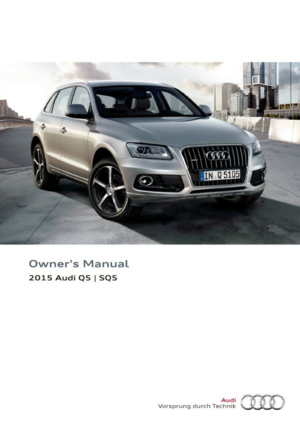 1
1 2
2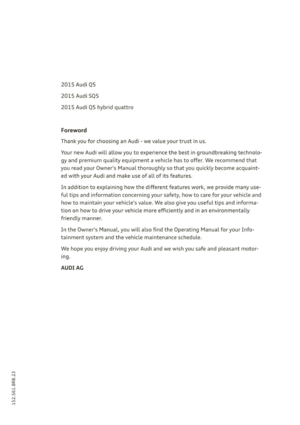 3
3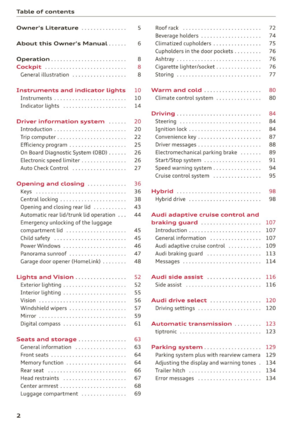 4
4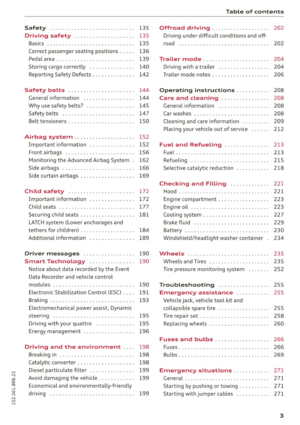 5
5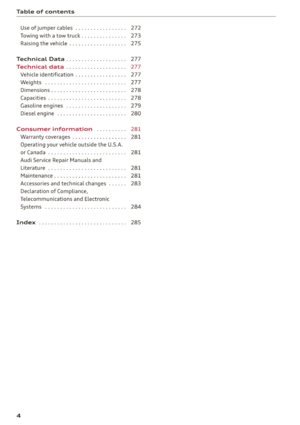 6
6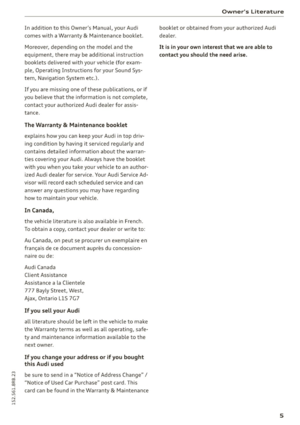 7
7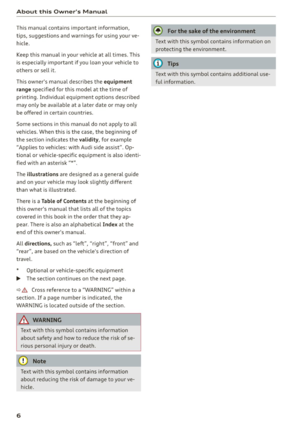 8
8 9
9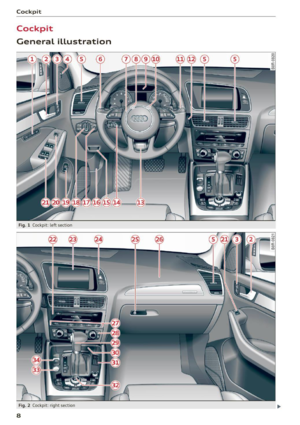 10
10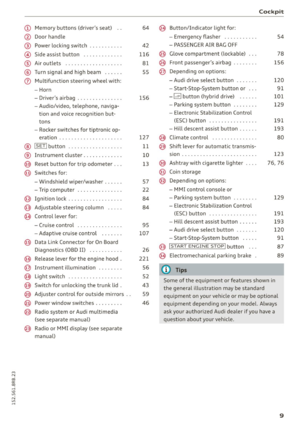 11
11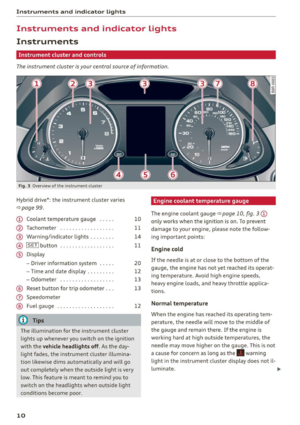 12
12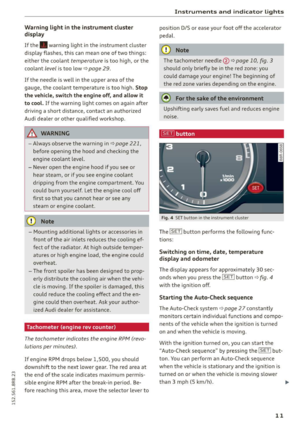 13
13 14
14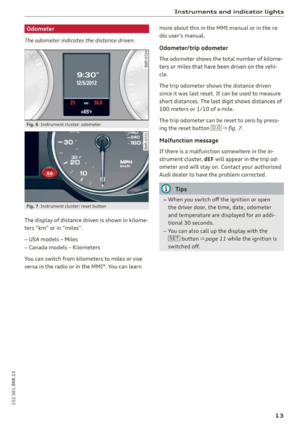 15
15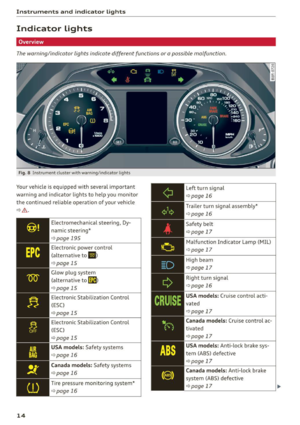 16
16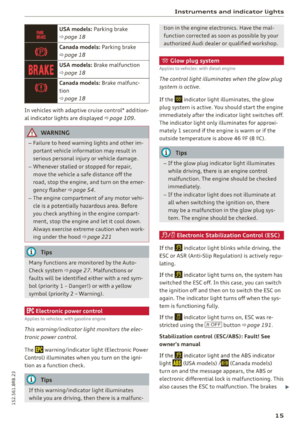 17
17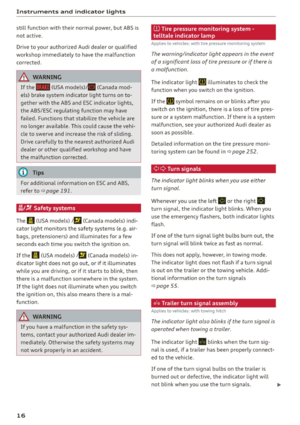 18
18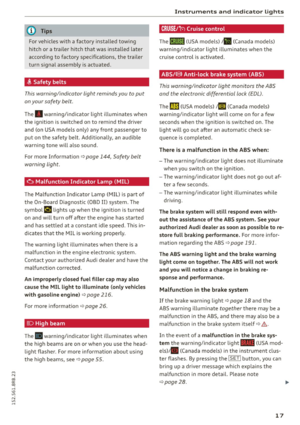 19
19 20
20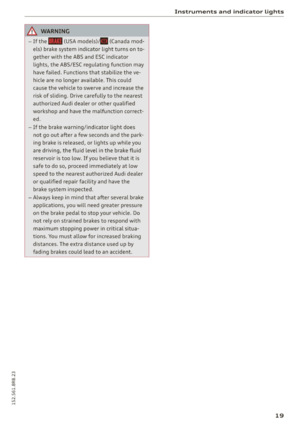 21
21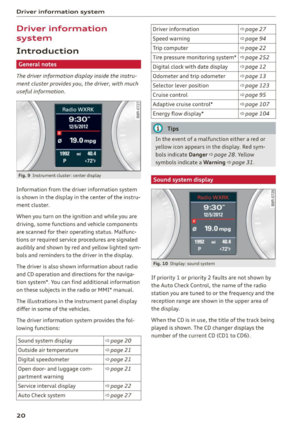 22
22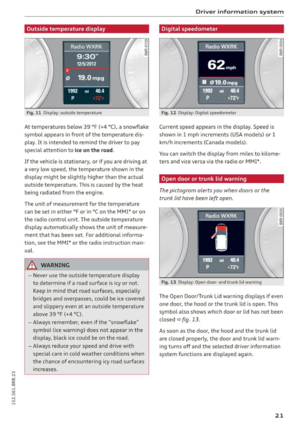 23
23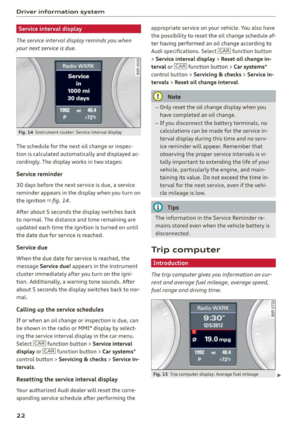 24
24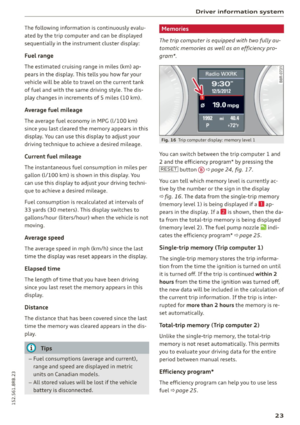 25
25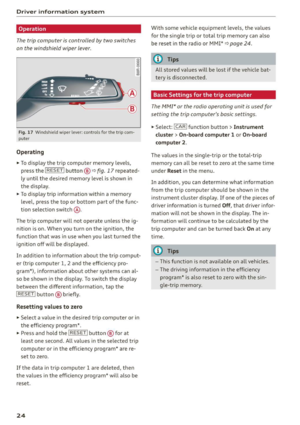 26
26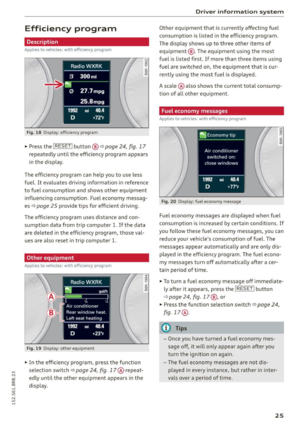 27
27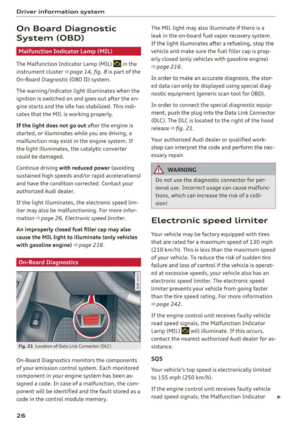 28
28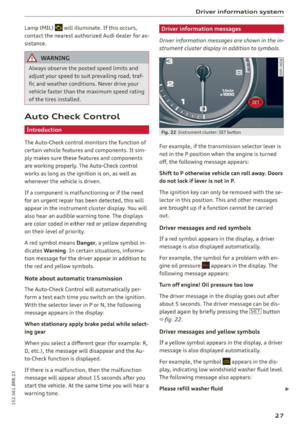 29
29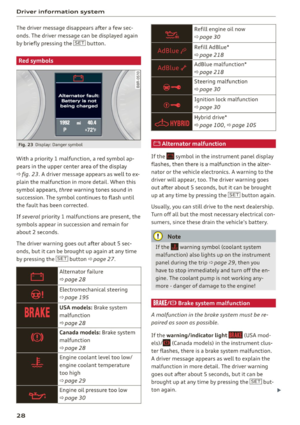 30
30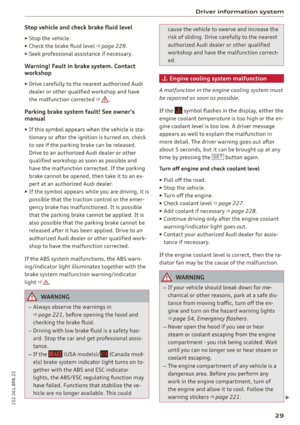 31
31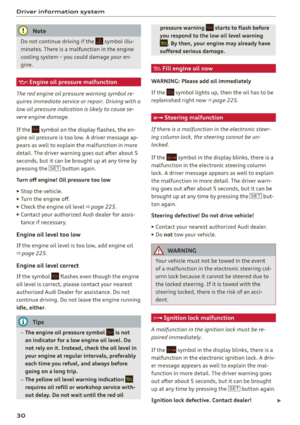 32
32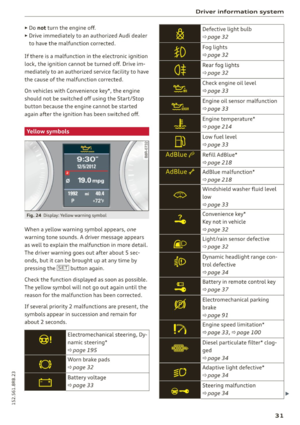 33
33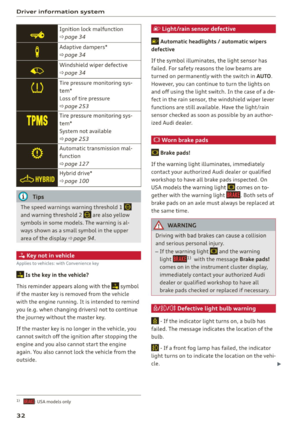 34
34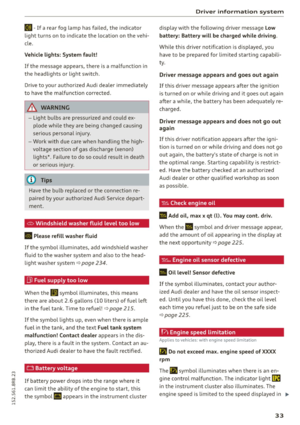 35
35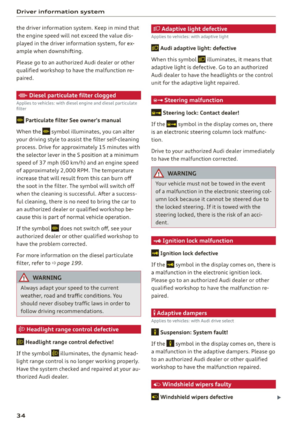 36
36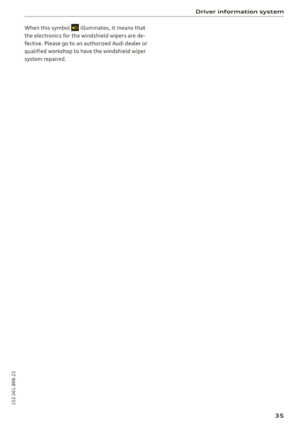 37
37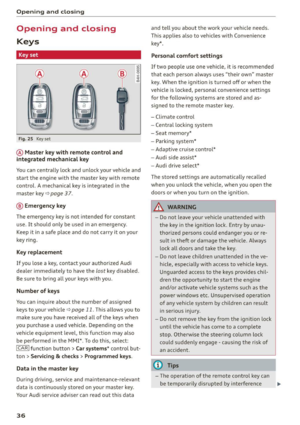 38
38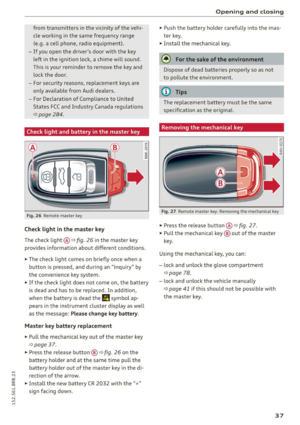 39
39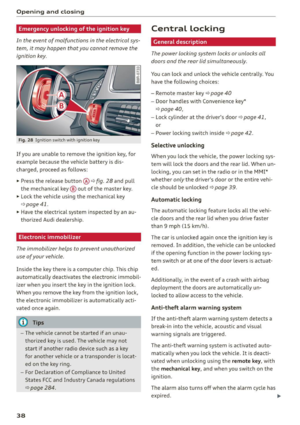 40
40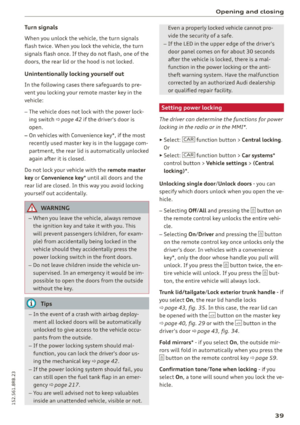 41
41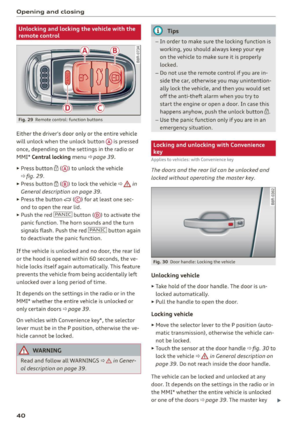 42
42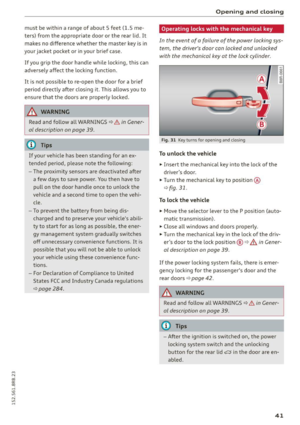 43
43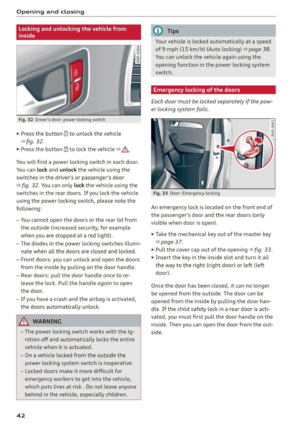 44
44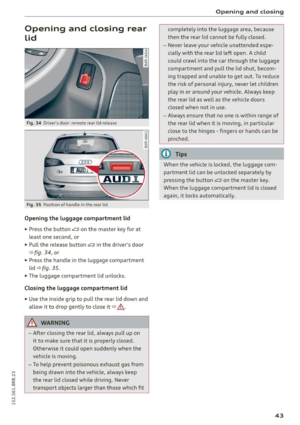 45
45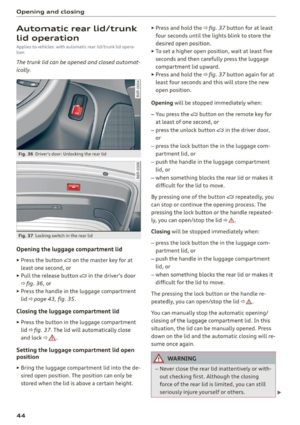 46
46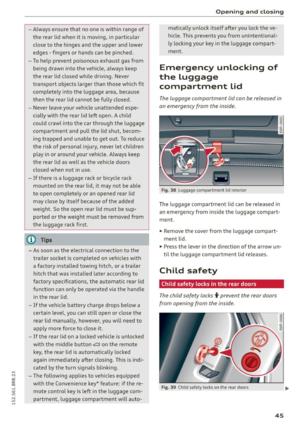 47
47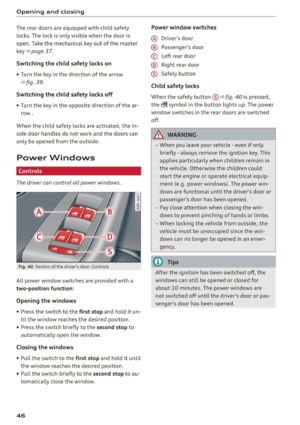 48
48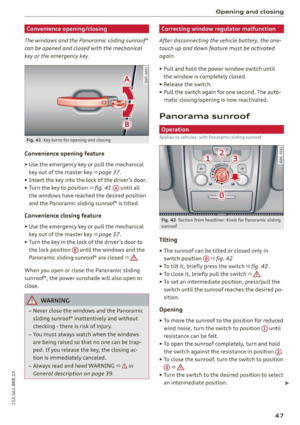 49
49 50
50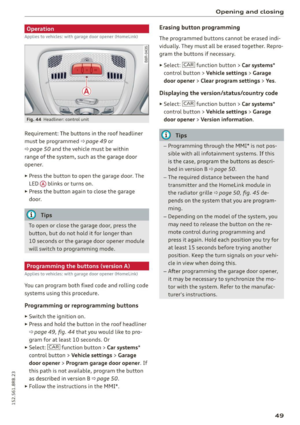 51
51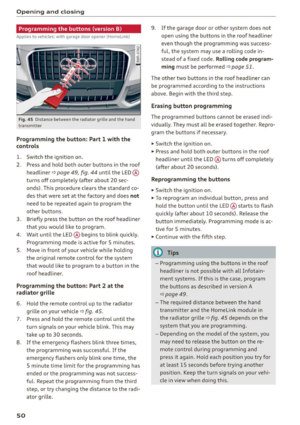 52
52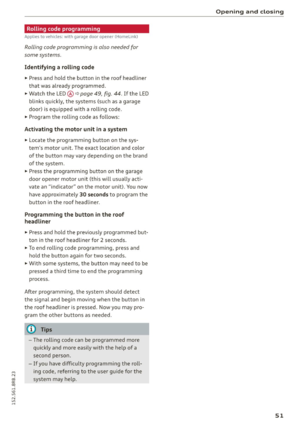 53
53 54
54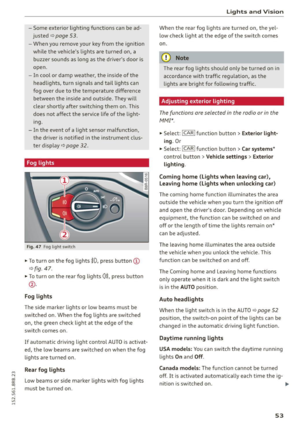 55
55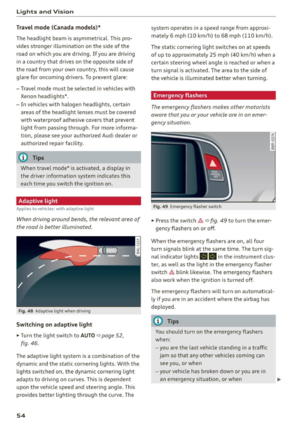 56
56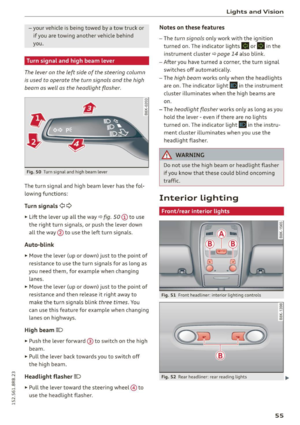 57
57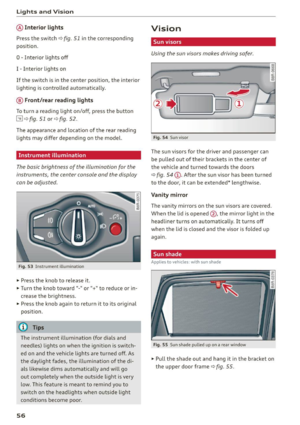 58
58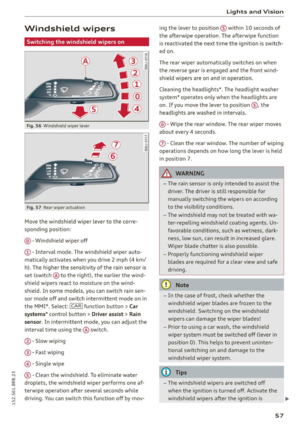 59
59 60
60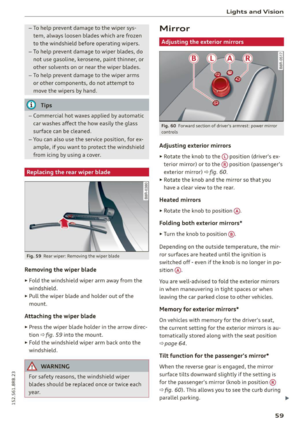 61
61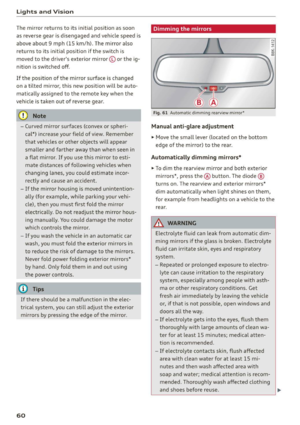 62
62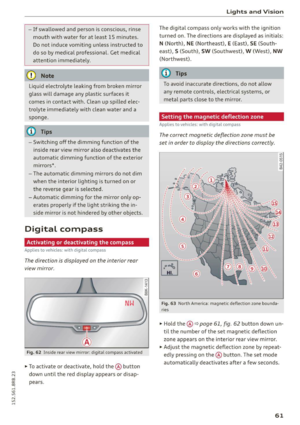 63
63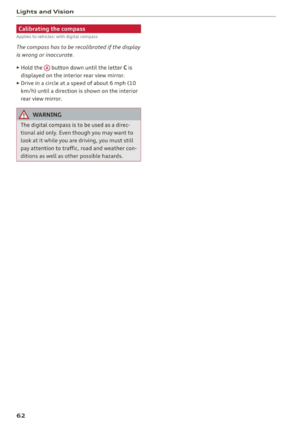 64
64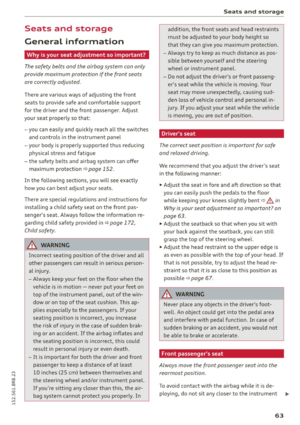 65
65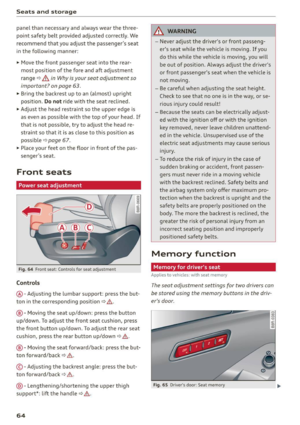 66
66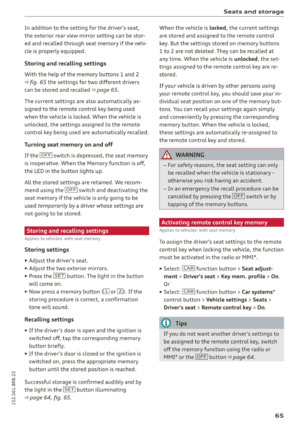 67
67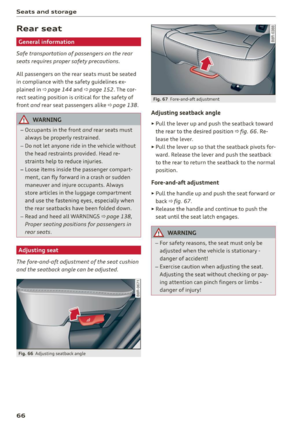 68
68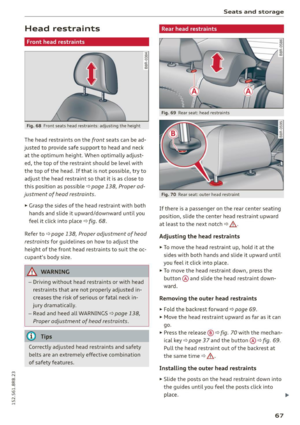 69
69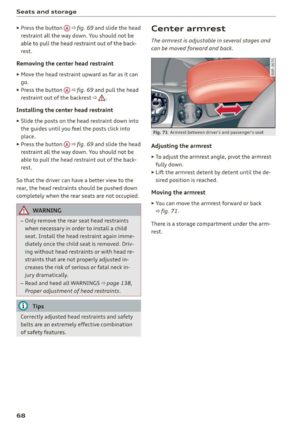 70
70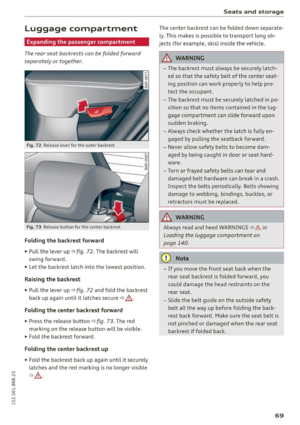 71
71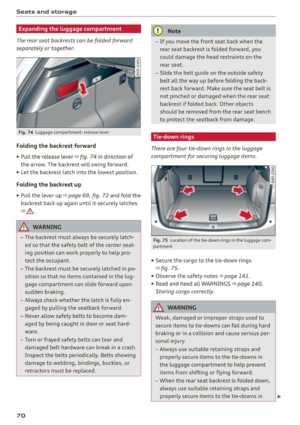 72
72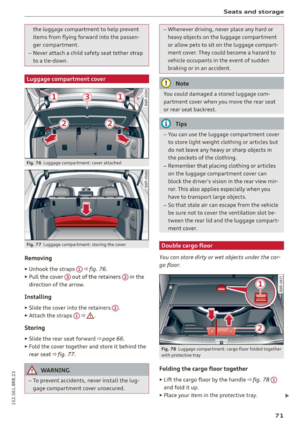 73
73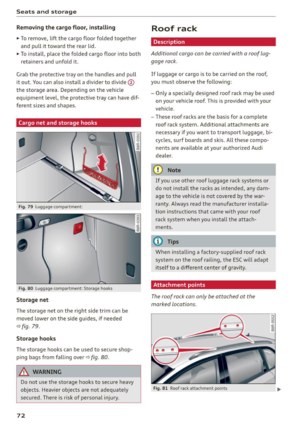 74
74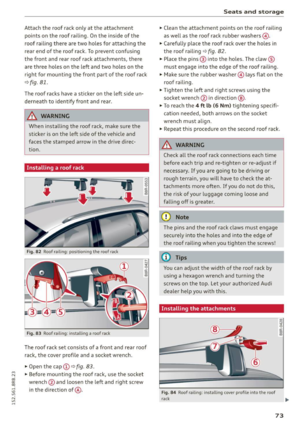 75
75 76
76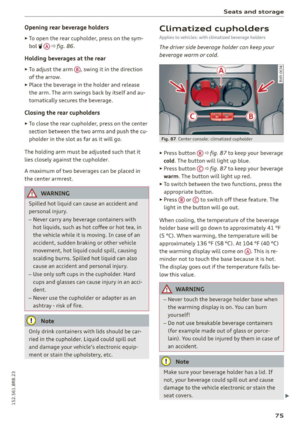 77
77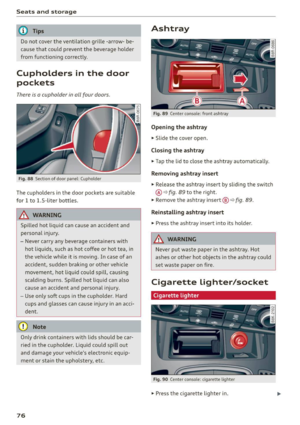 78
78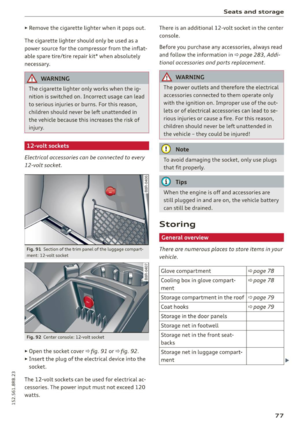 79
79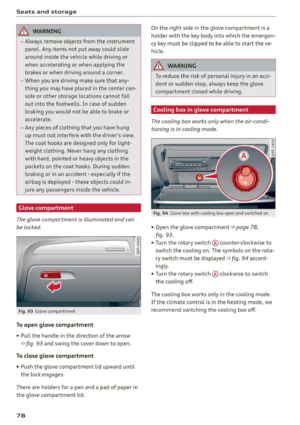 80
80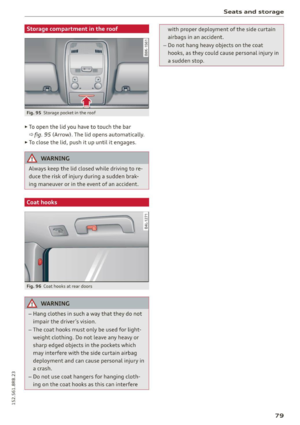 81
81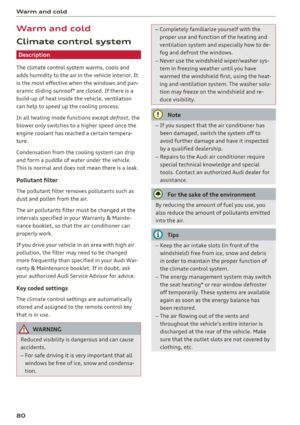 82
82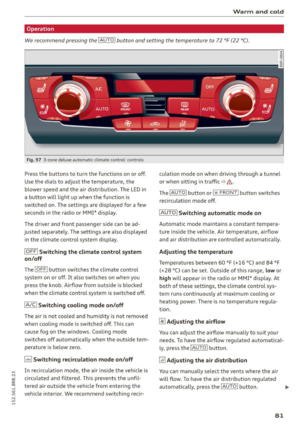 83
83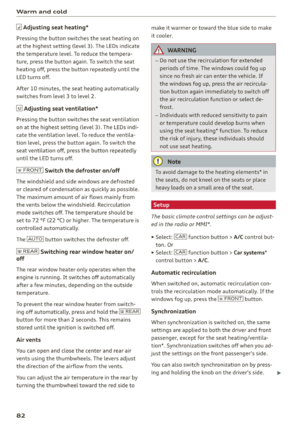 84
84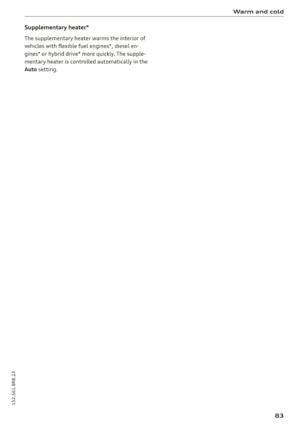 85
85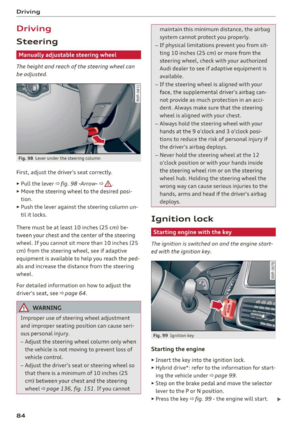 86
86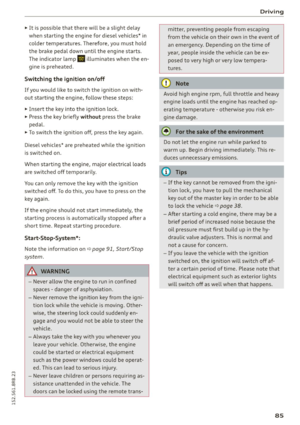 87
87 88
88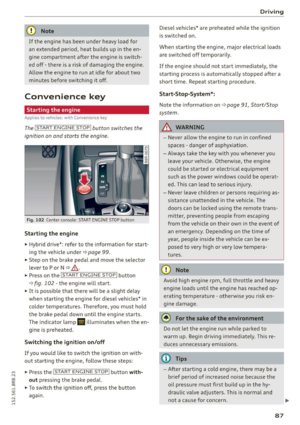 89
89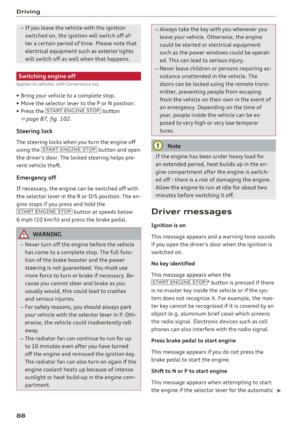 90
90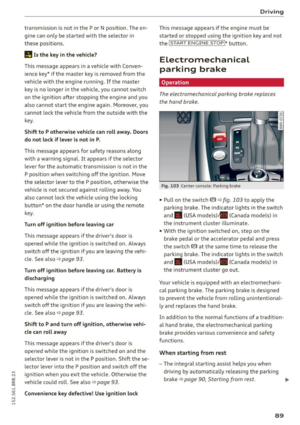 91
91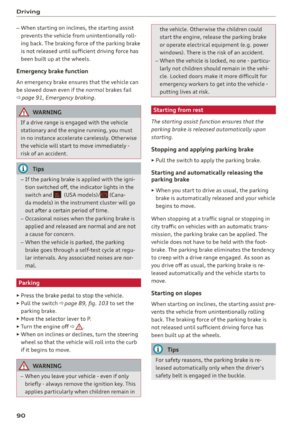 92
92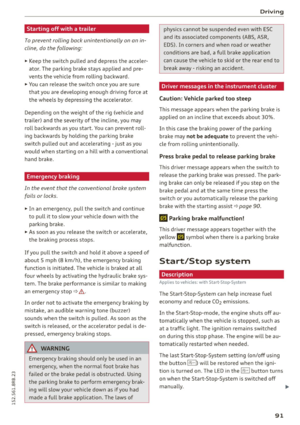 93
93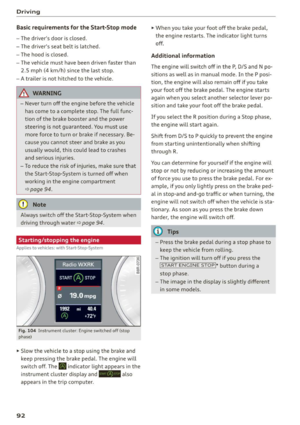 94
94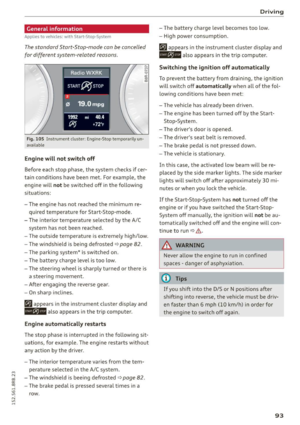 95
95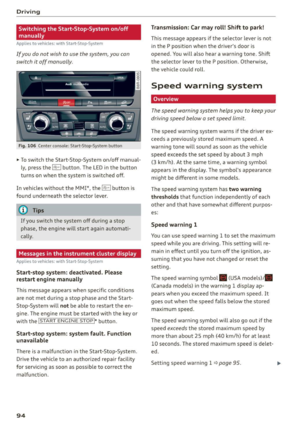 96
96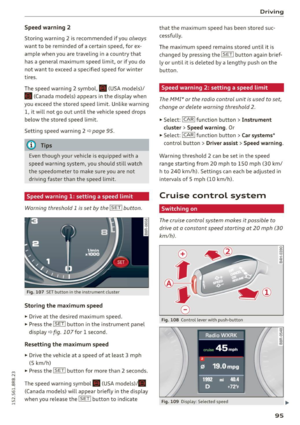 97
97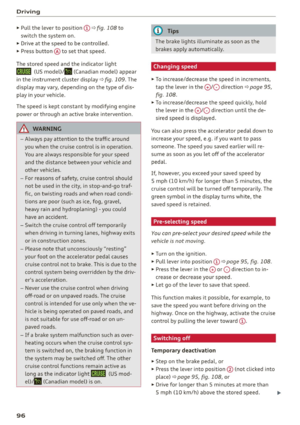 98
98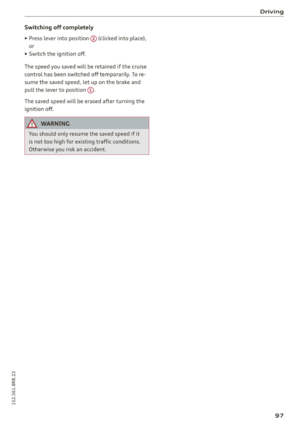 99
99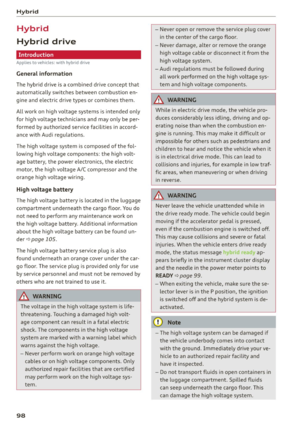 100
100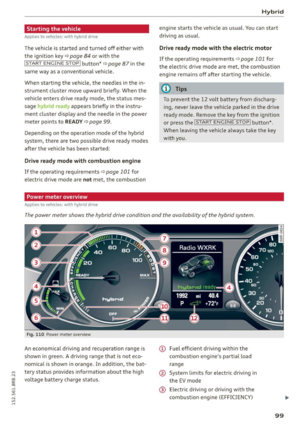 101
101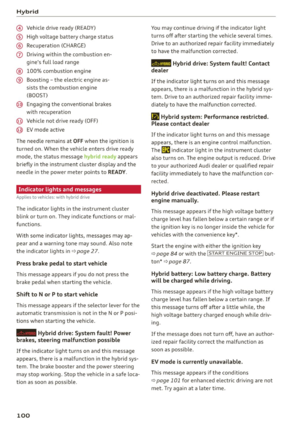 102
102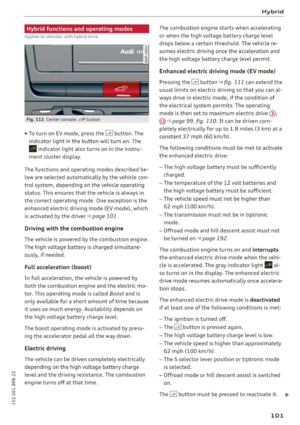 103
103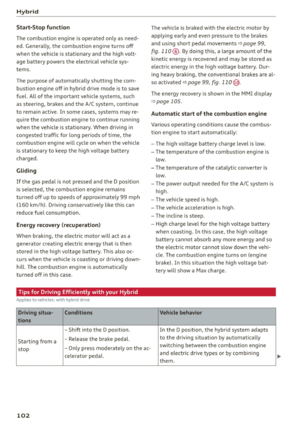 104
104 105
105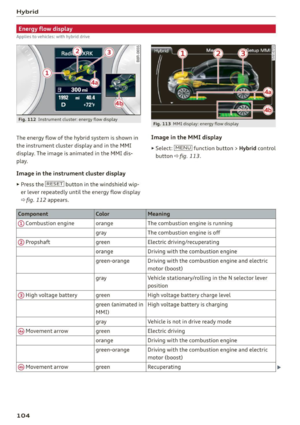 106
106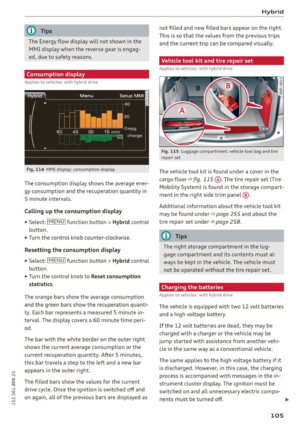 107
107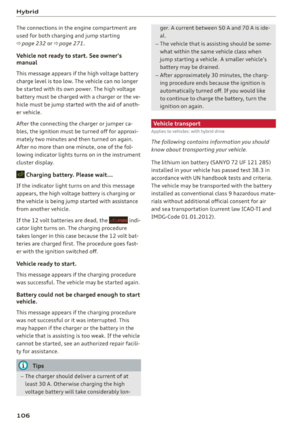 108
108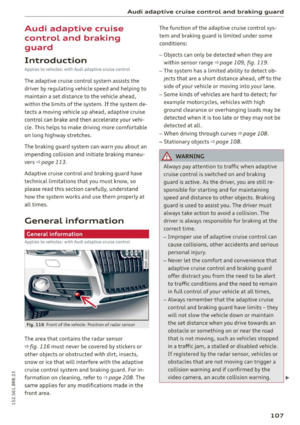 109
109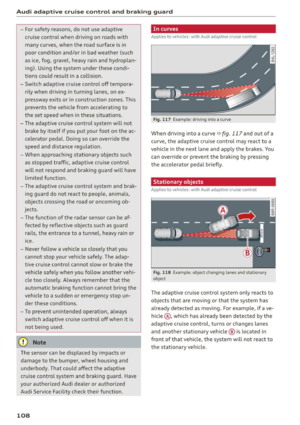 110
110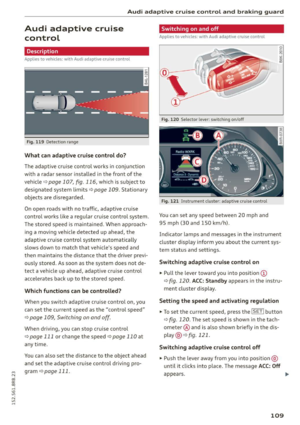 111
111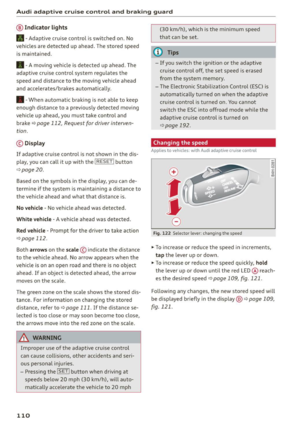 112
112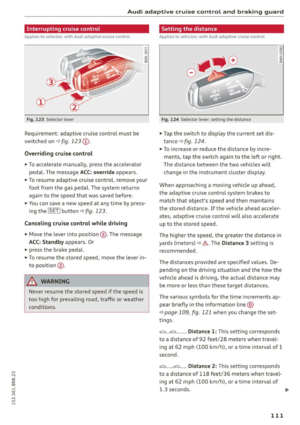 113
113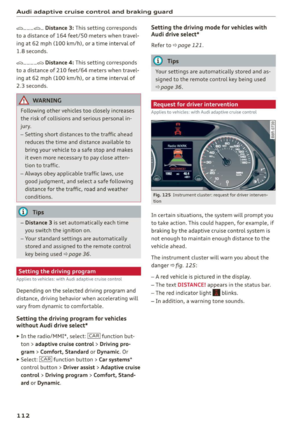 114
114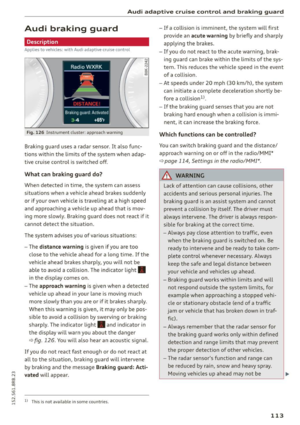 115
115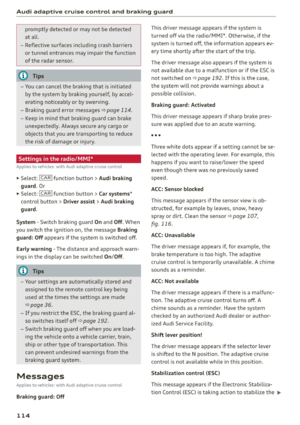 116
116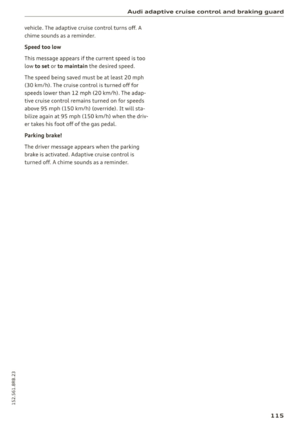 117
117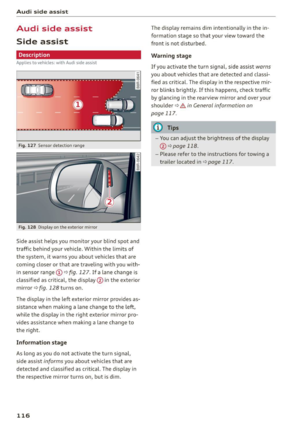 118
118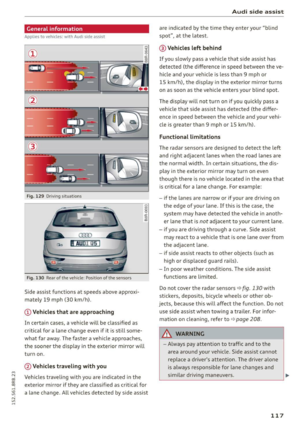 119
119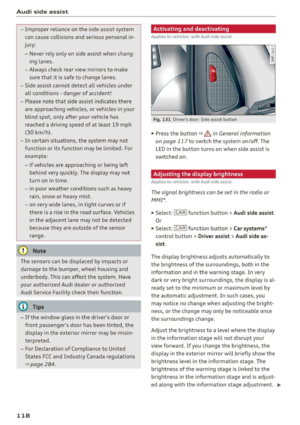 120
120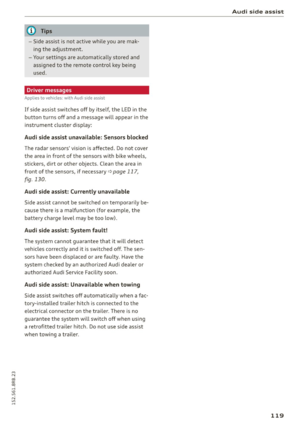 121
121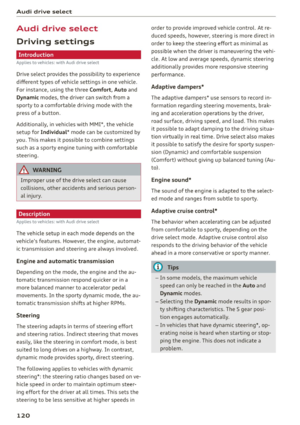 122
122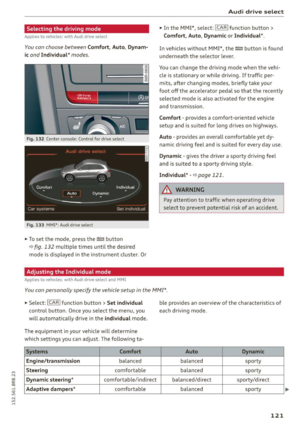 123
123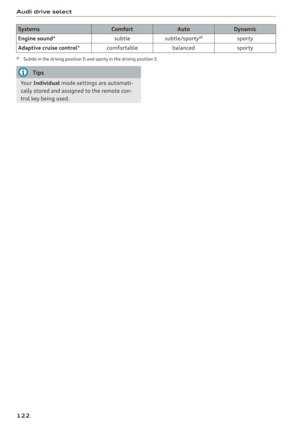 124
124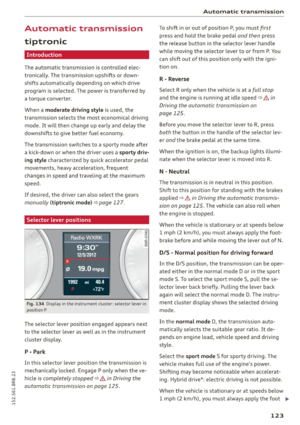 125
125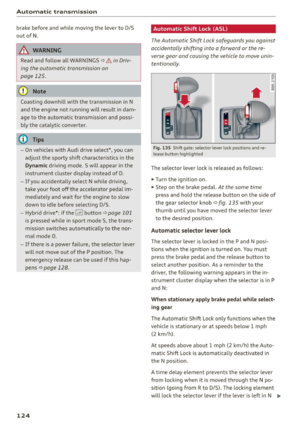 126
126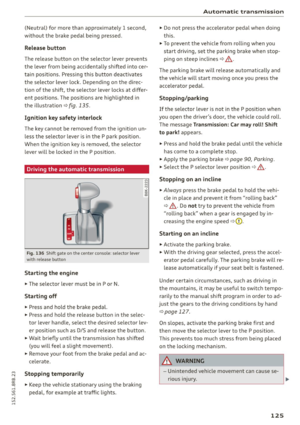 127
127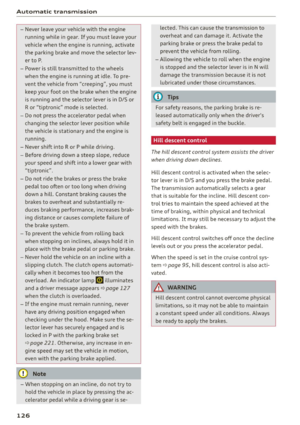 128
128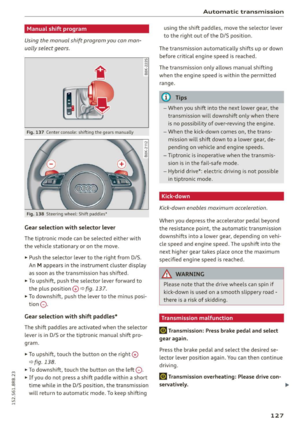 129
129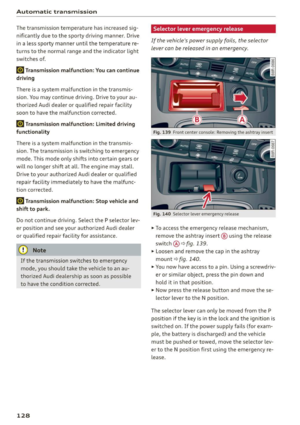 130
130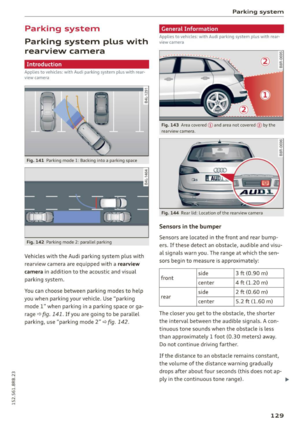 131
131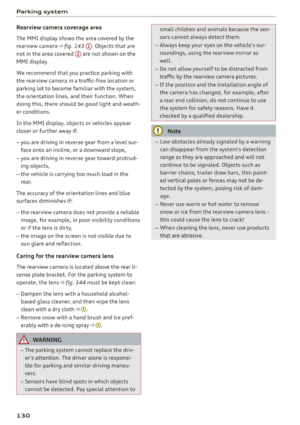 132
132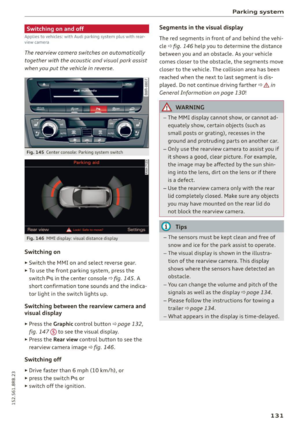 133
133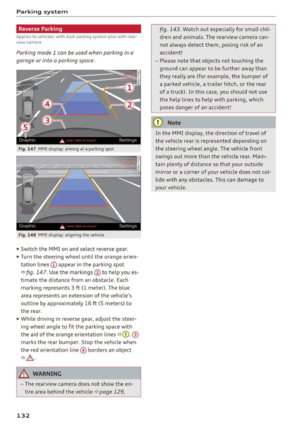 134
134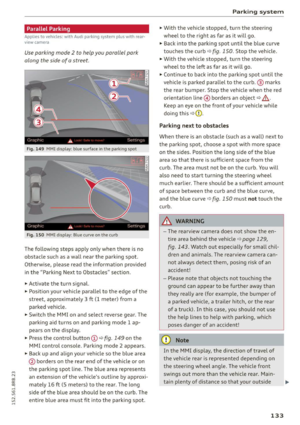 135
135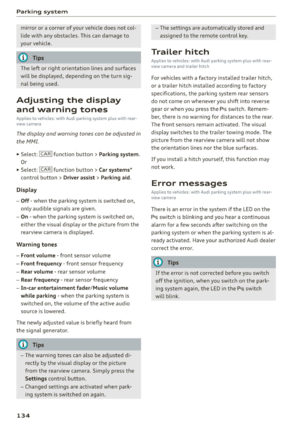 136
136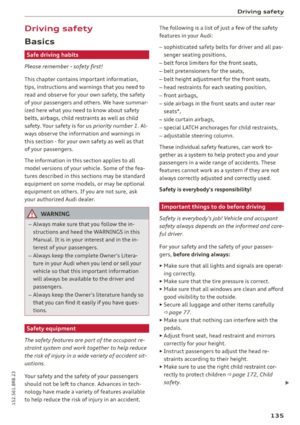 137
137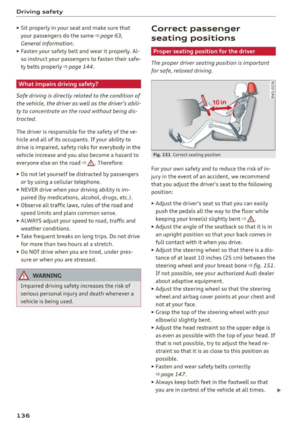 138
138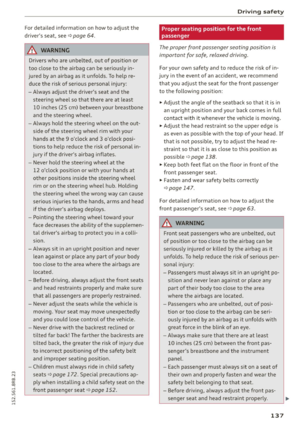 139
139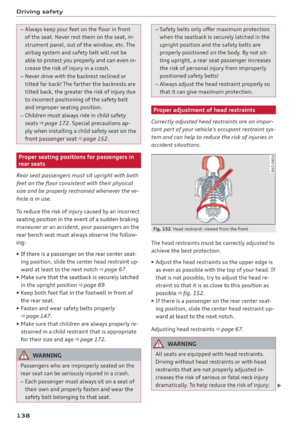 140
140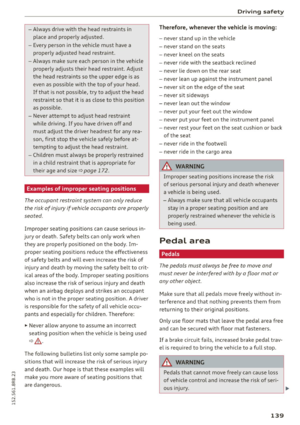 141
141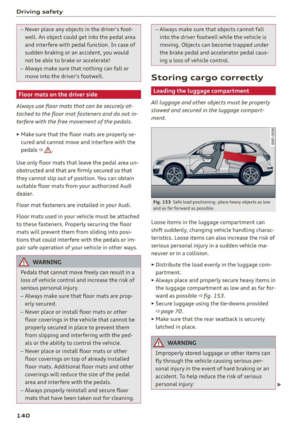 142
142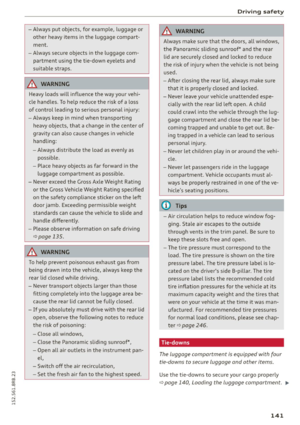 143
143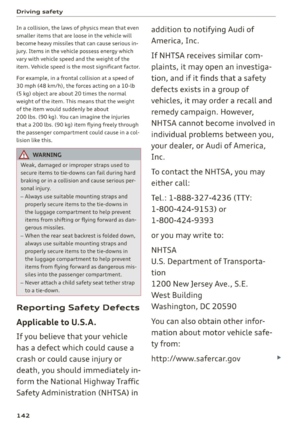 144
144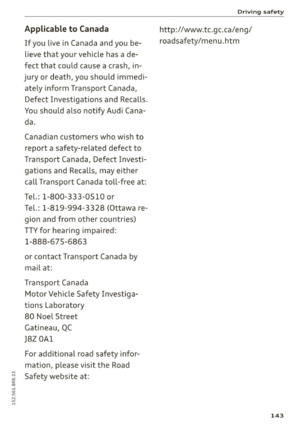 145
145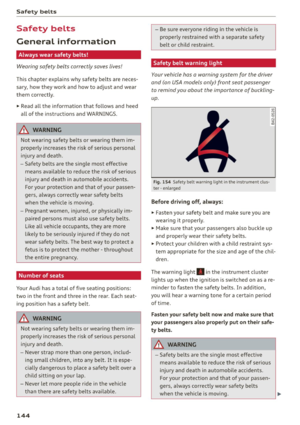 146
146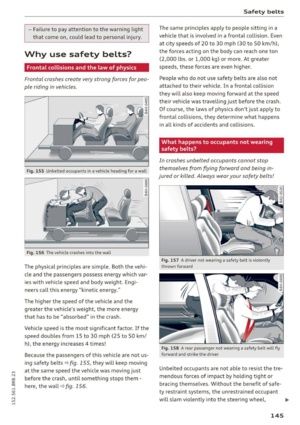 147
147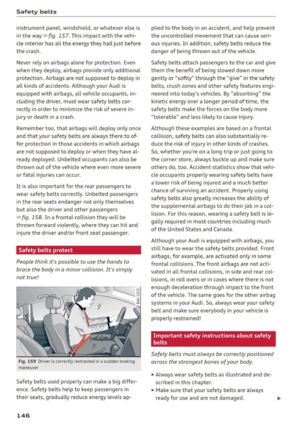 148
148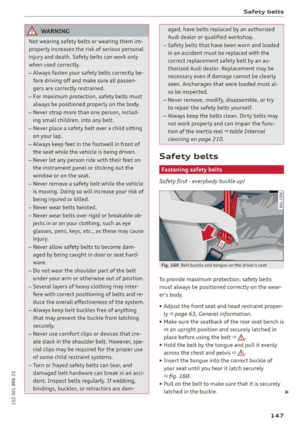 149
149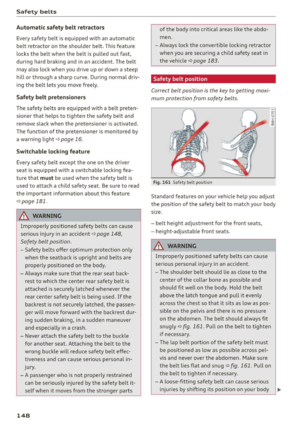 150
150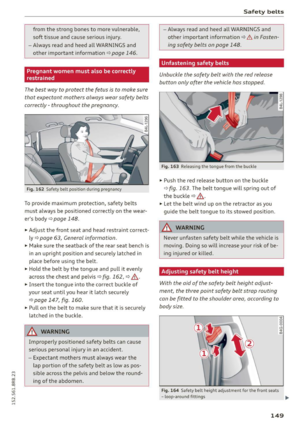 151
151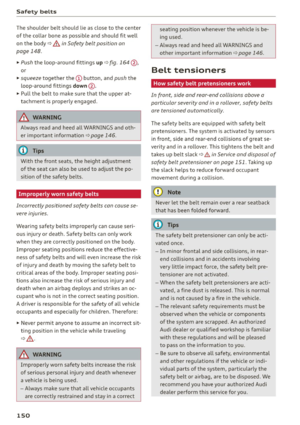 152
152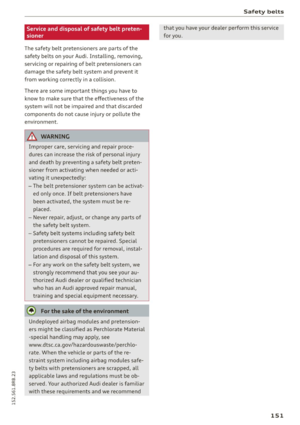 153
153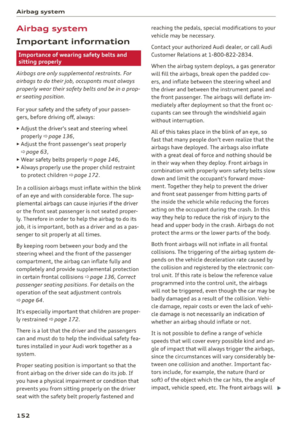 154
154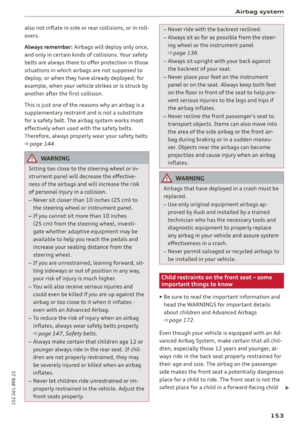 155
155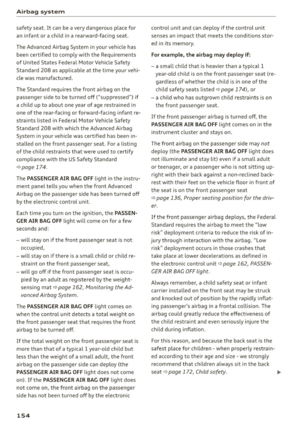 156
156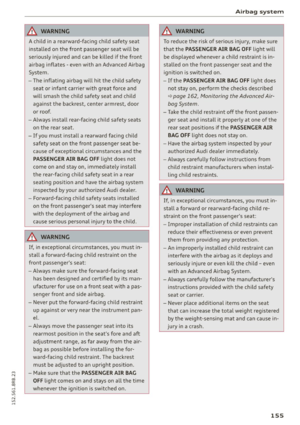 157
157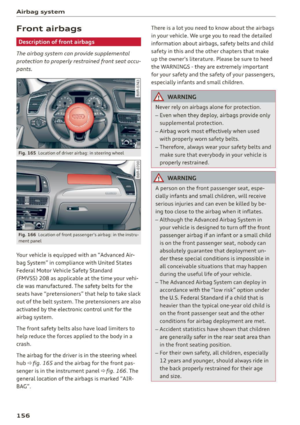 158
158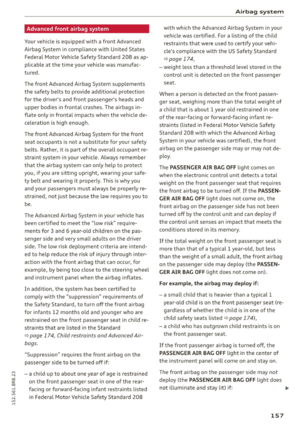 159
159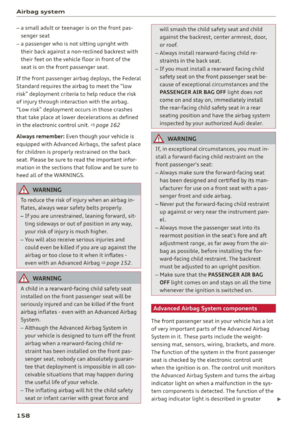 160
160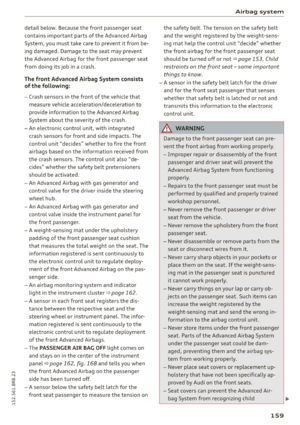 161
161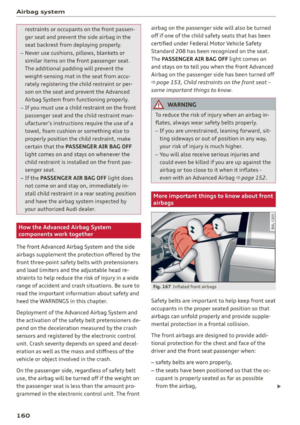 162
162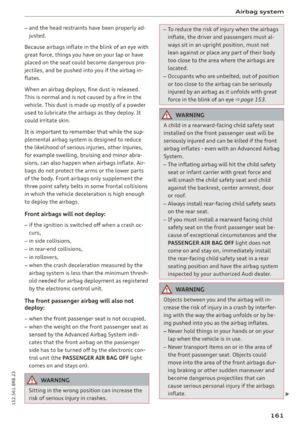 163
163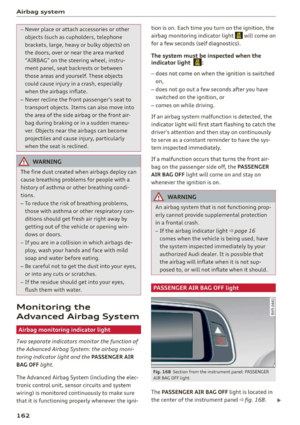 164
164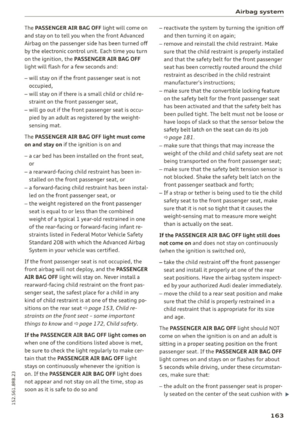 165
165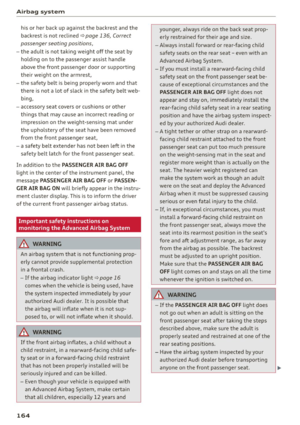 166
166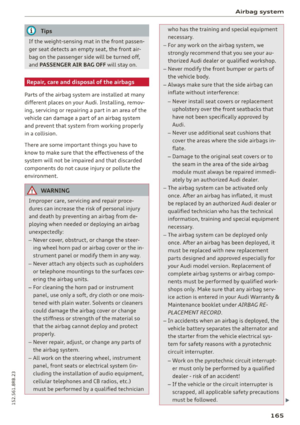 167
167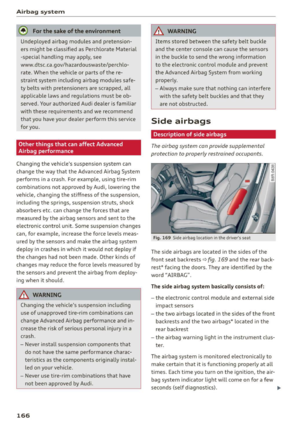 168
168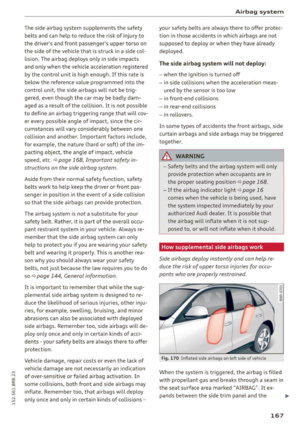 169
169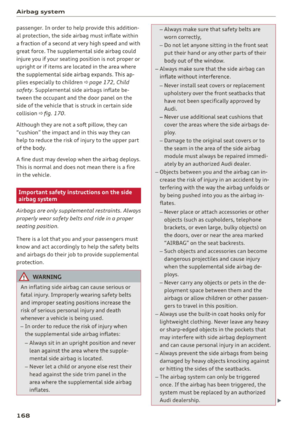 170
170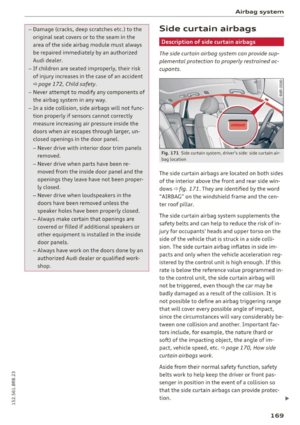 171
171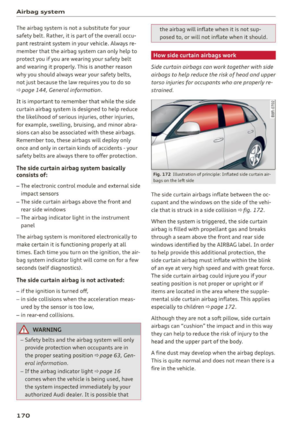 172
172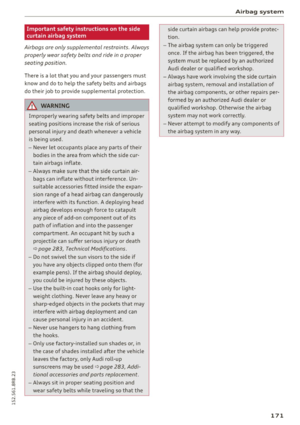 173
173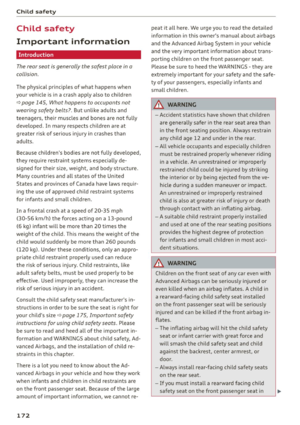 174
174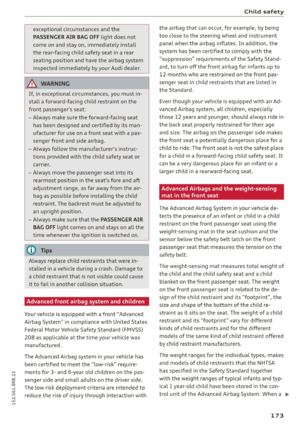 175
175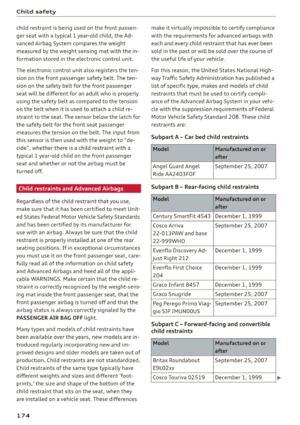 176
176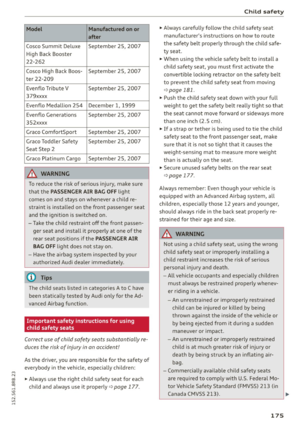 177
177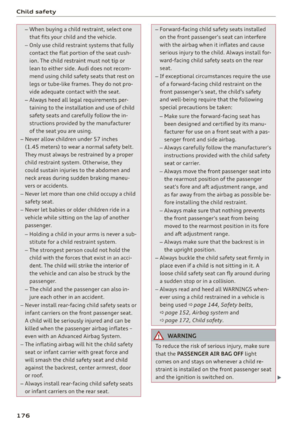 178
178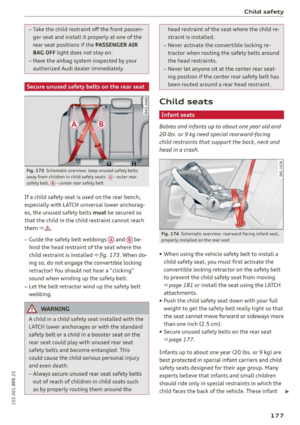 179
179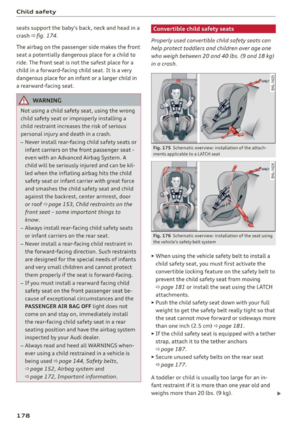 180
180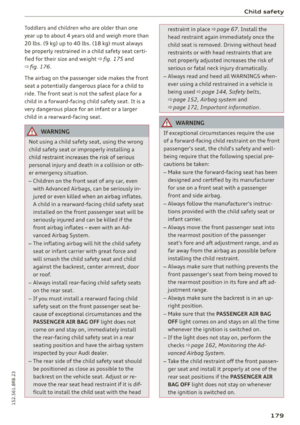 181
181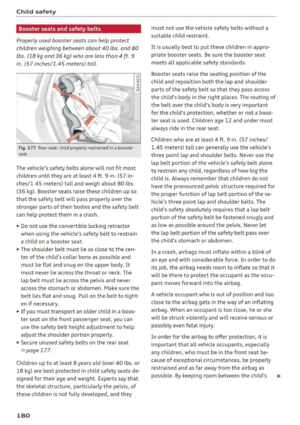 182
182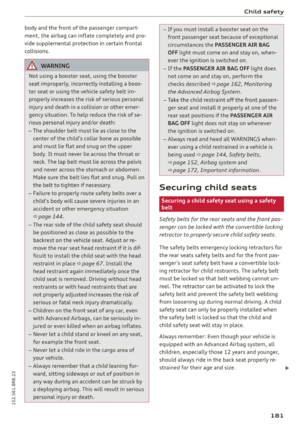 183
183 184
184 185
185 186
186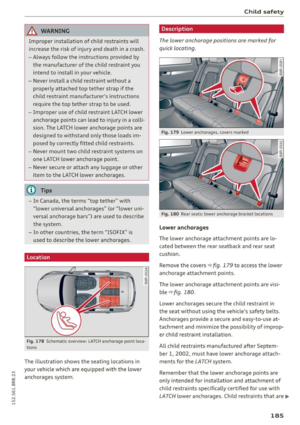 187
187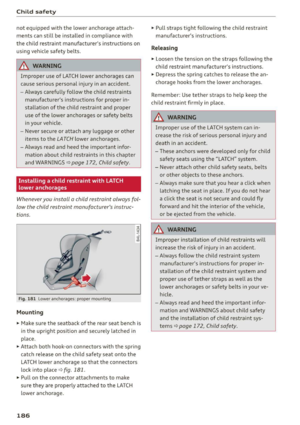 188
188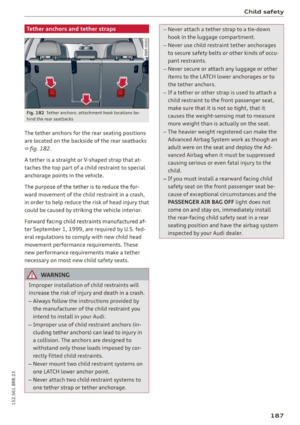 189
189 190
190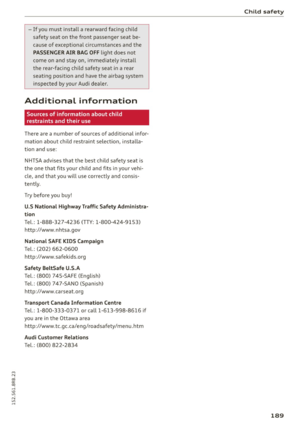 191
191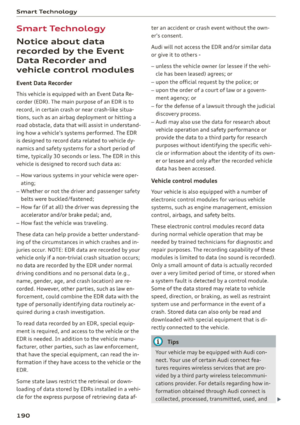 192
192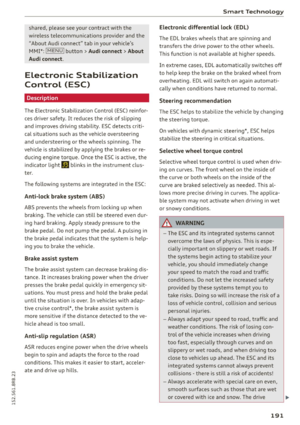 193
193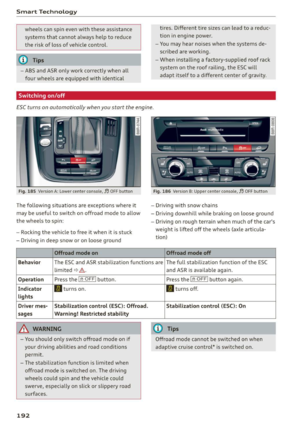 194
194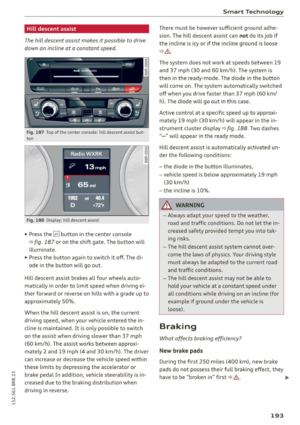 195
195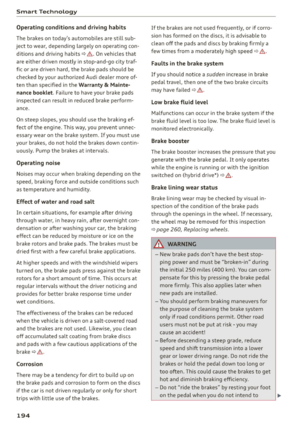 196
196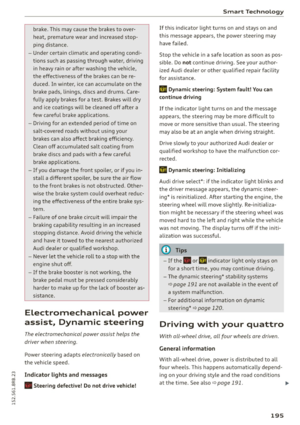 197
197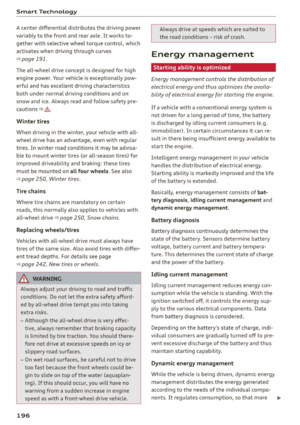 198
198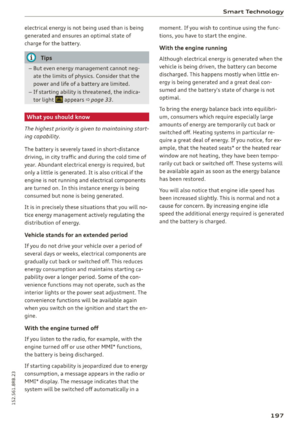 199
199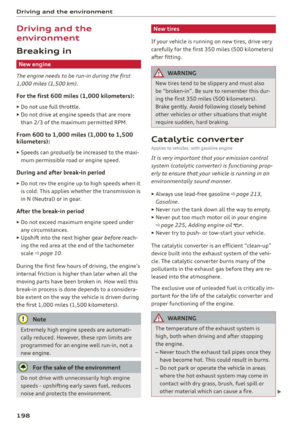 200
200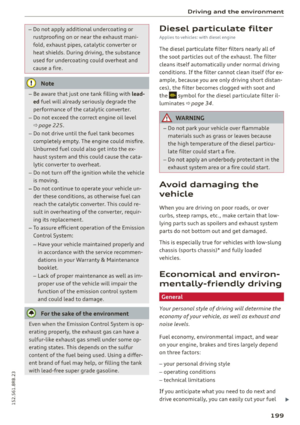 201
201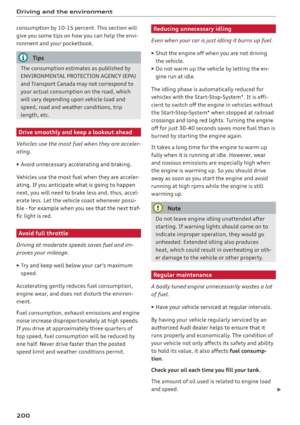 202
202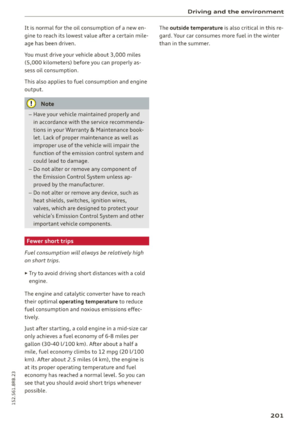 203
203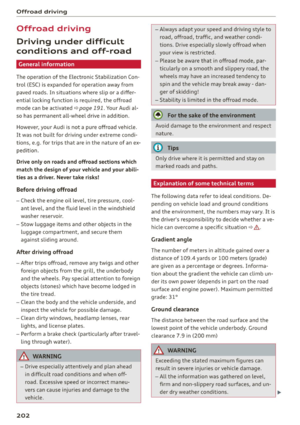 204
204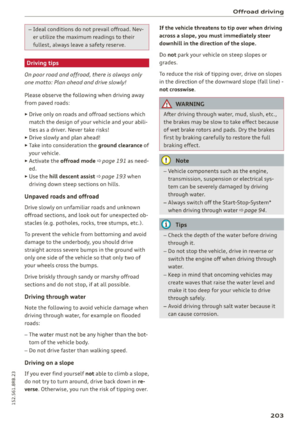 205
205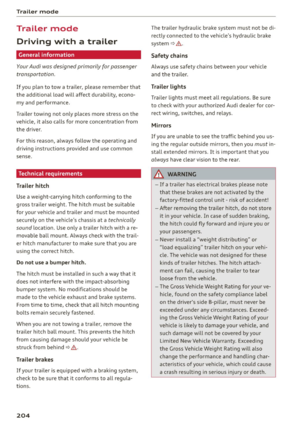 206
206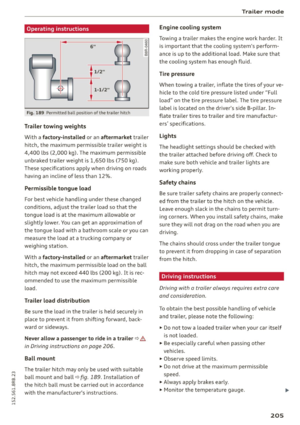 207
207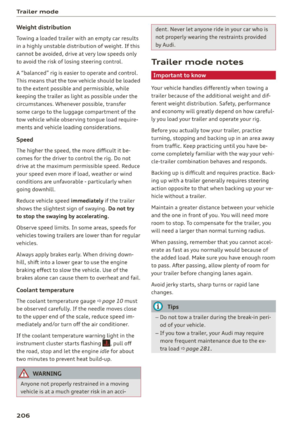 208
208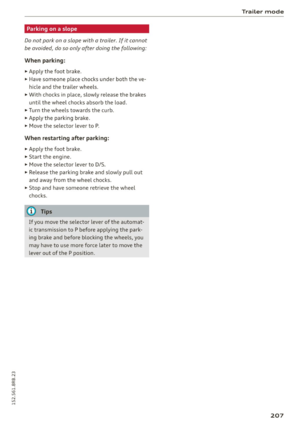 209
209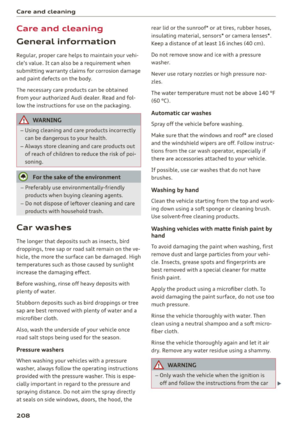 210
210 211
211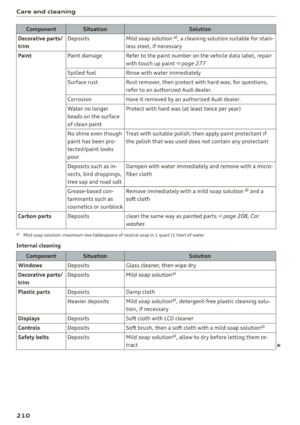 212
212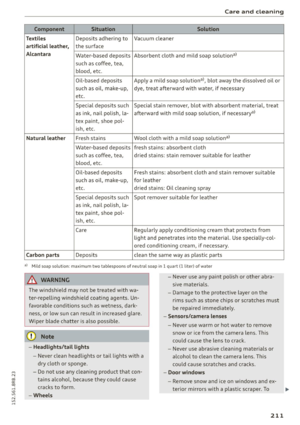 213
213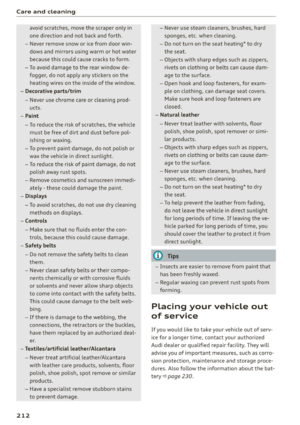 214
214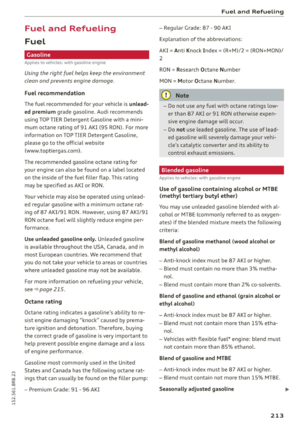 215
215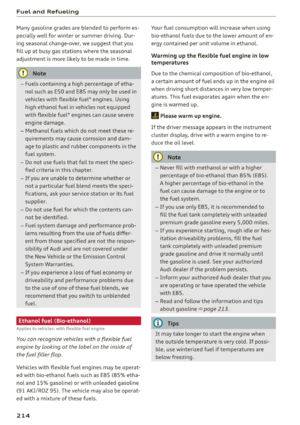 216
216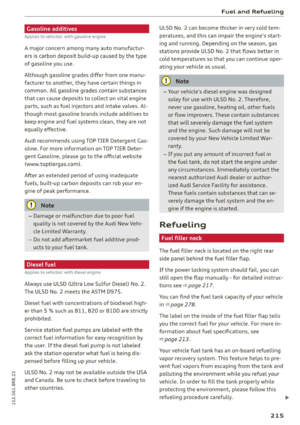 217
217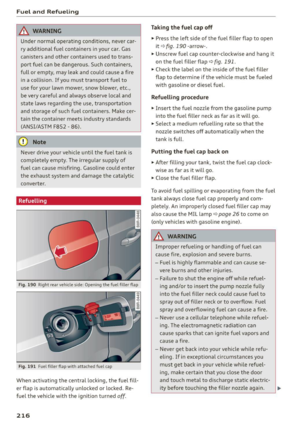 218
218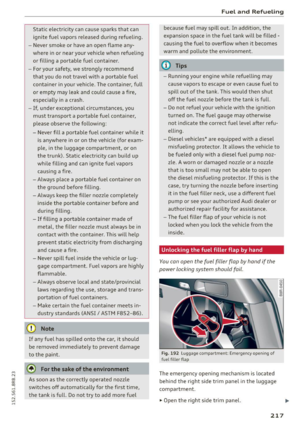 219
219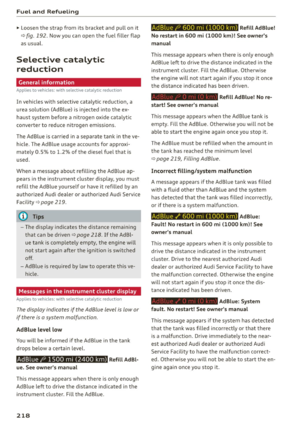 220
220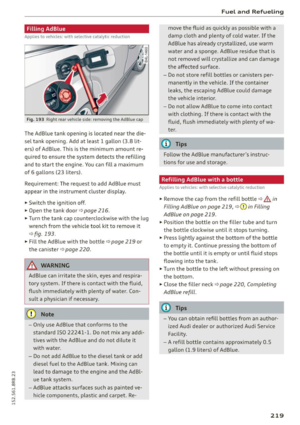 221
221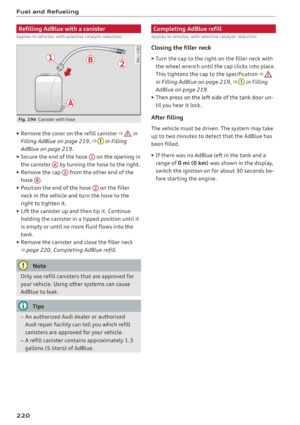 222
222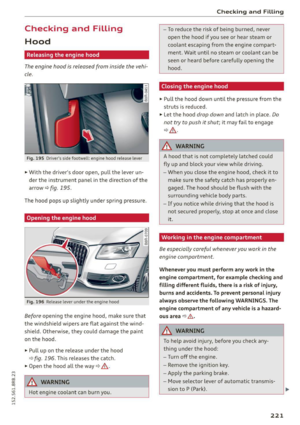 223
223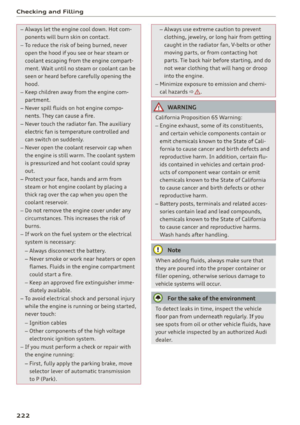 224
224 225
225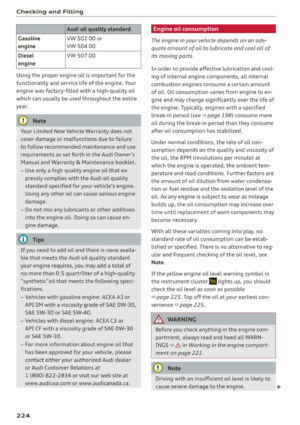 226
226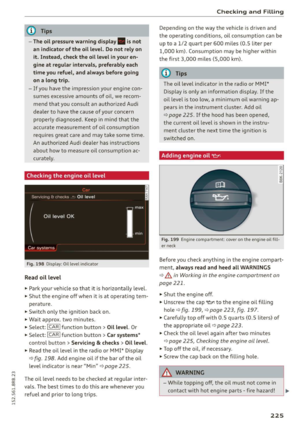 227
227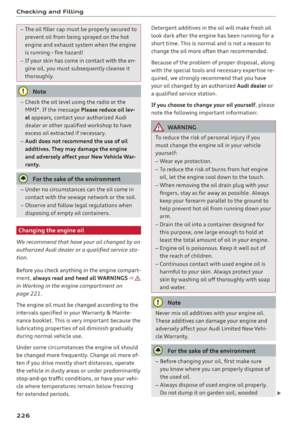 228
228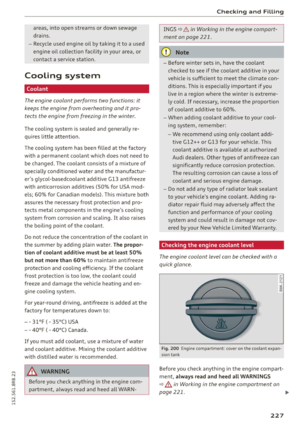 229
229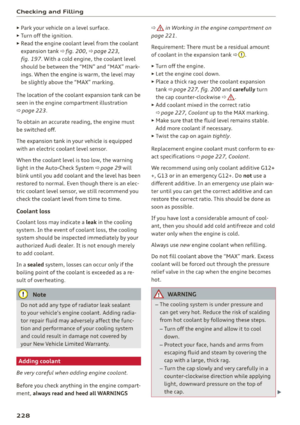 230
230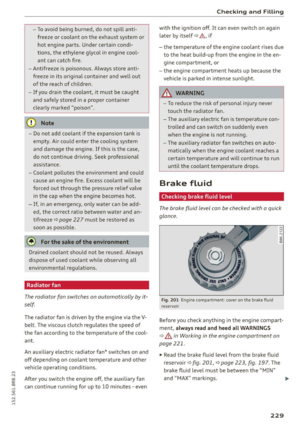 231
231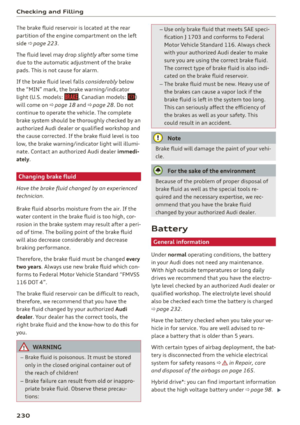 232
232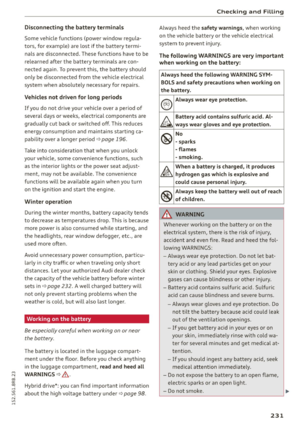 233
233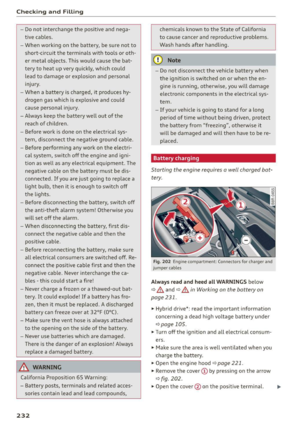 234
234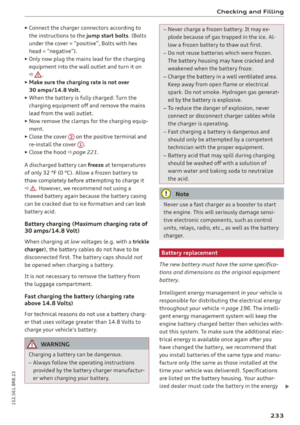 235
235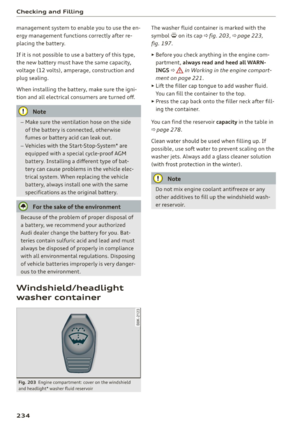 236
236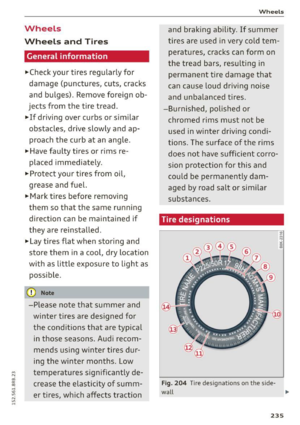 237
237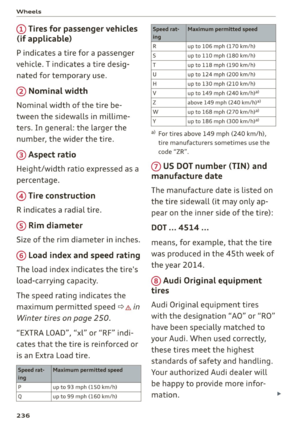 238
238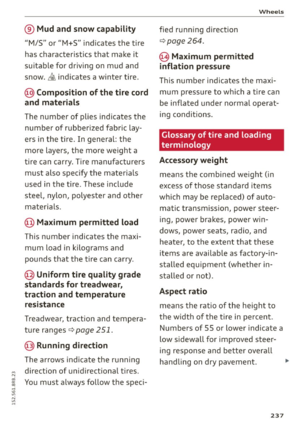 239
239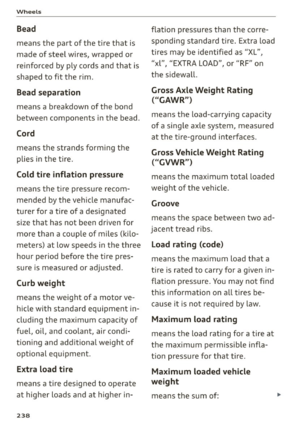 240
240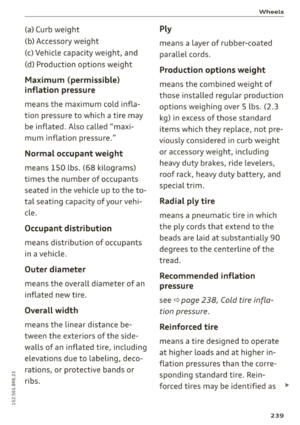 241
241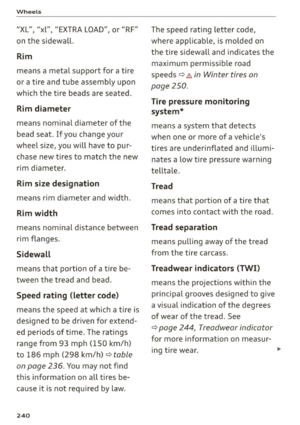 242
242 243
243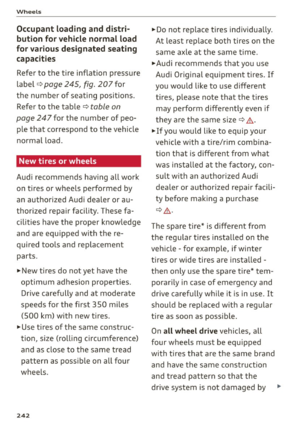 244
244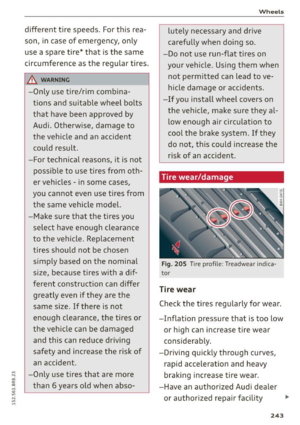 245
245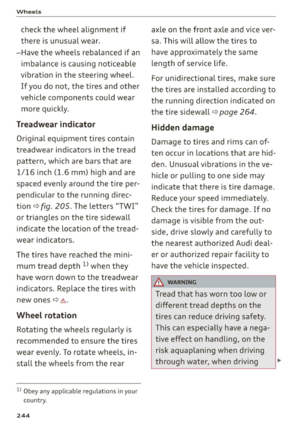 246
246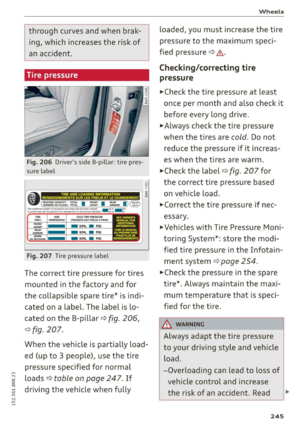 247
247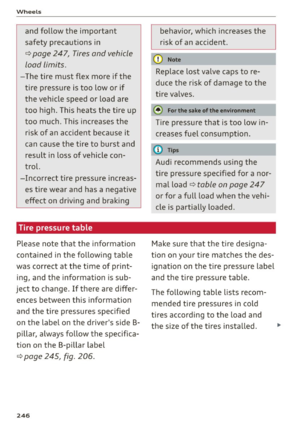 248
248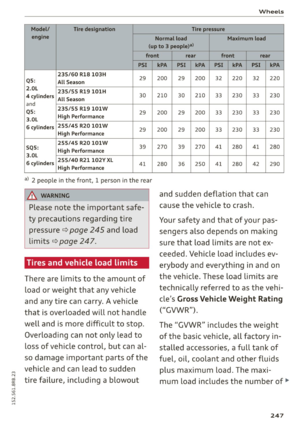 249
249 250
250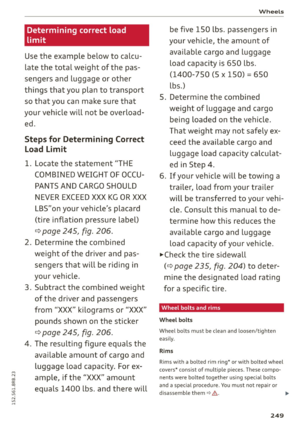 251
251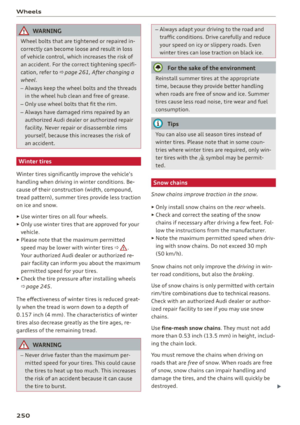 252
252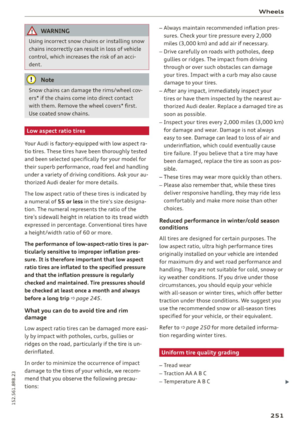 253
253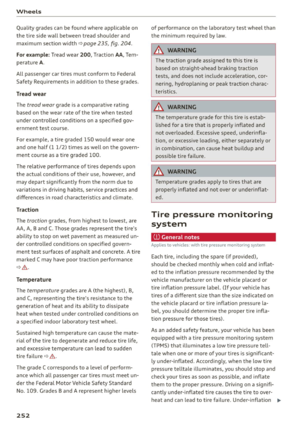 254
254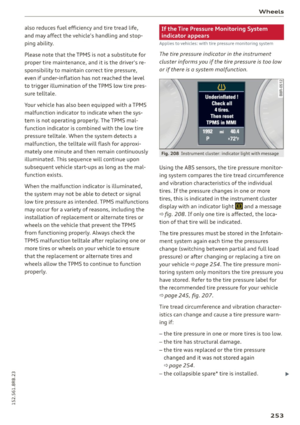 255
255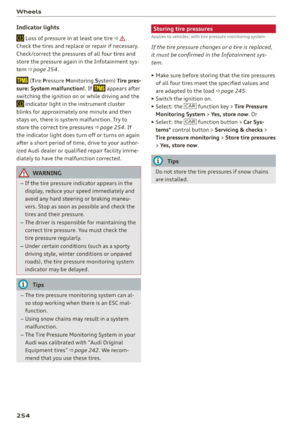 256
256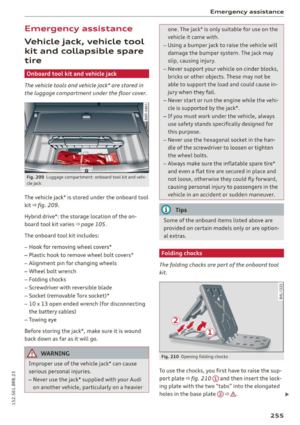 257
257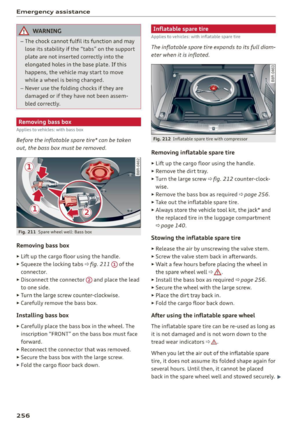 258
258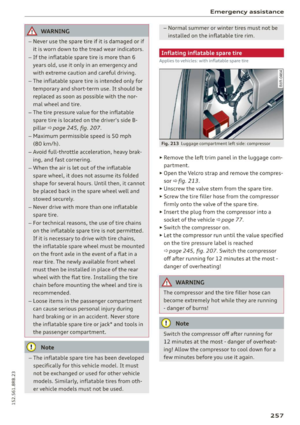 259
259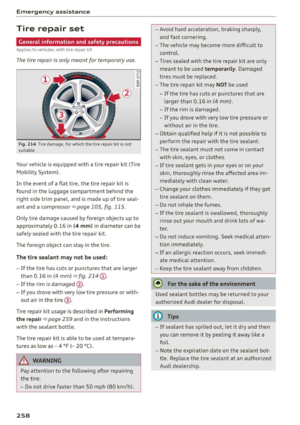 260
260 261
261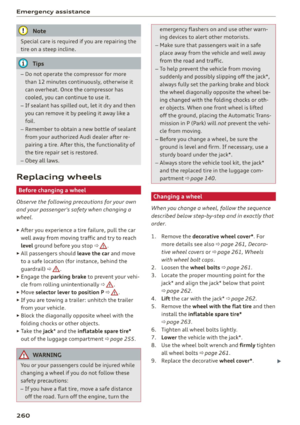 262
262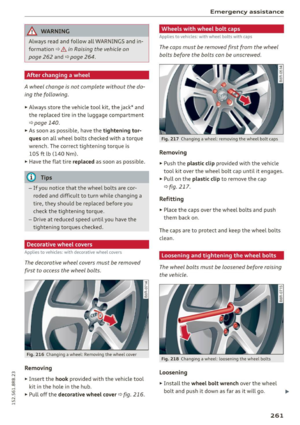 263
263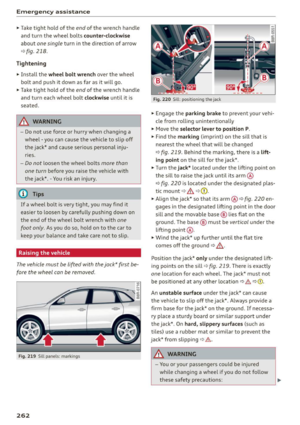 264
264 265
265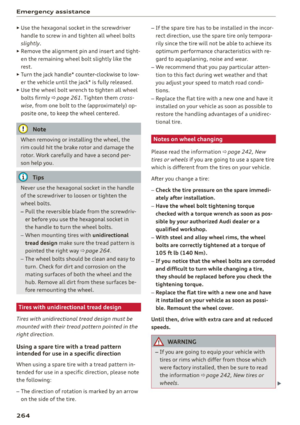 266
266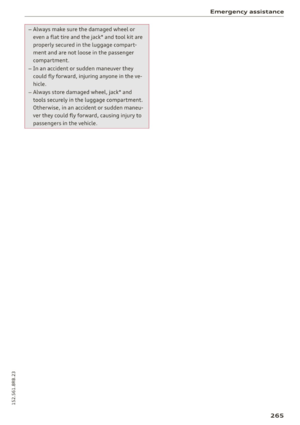 267
267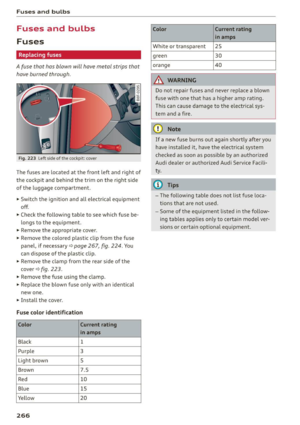 268
268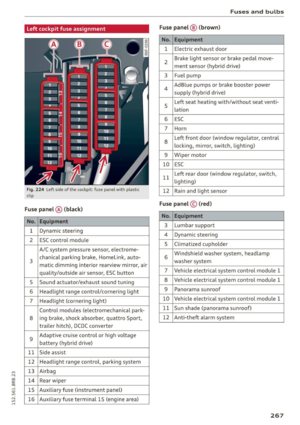 269
269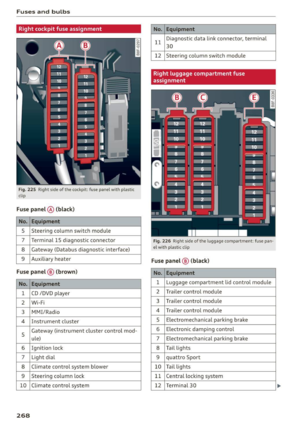 270
270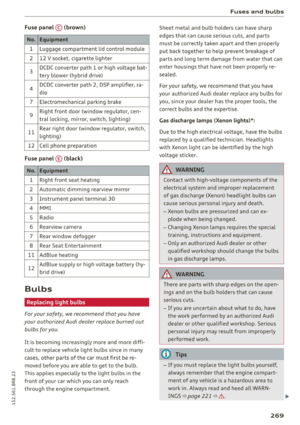 271
271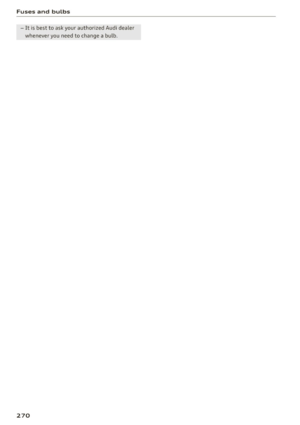 272
272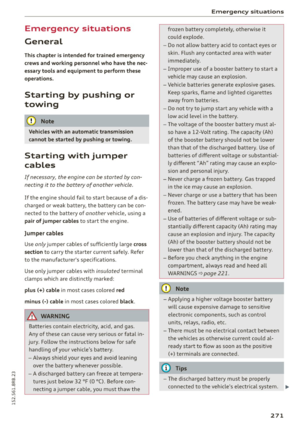 273
273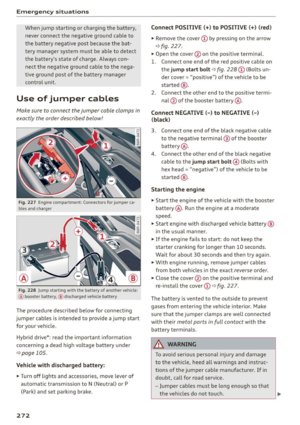 274
274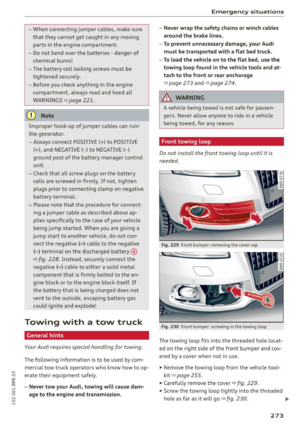 275
275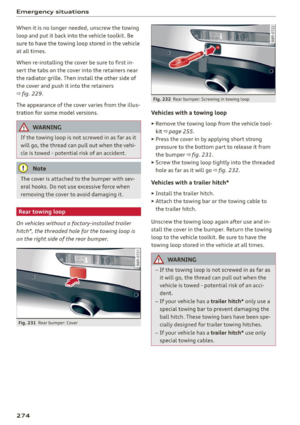 276
276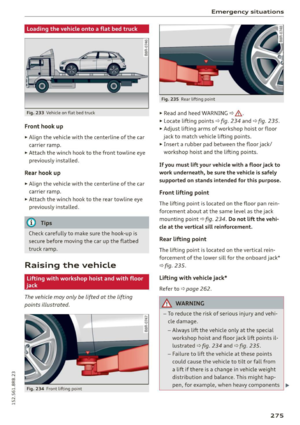 277
277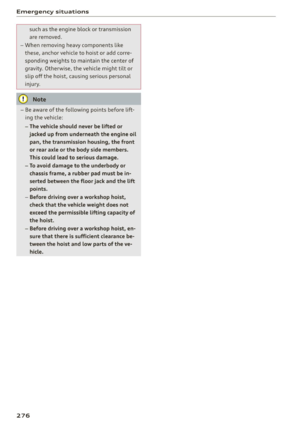 278
278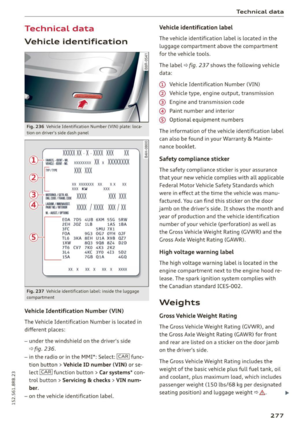 279
279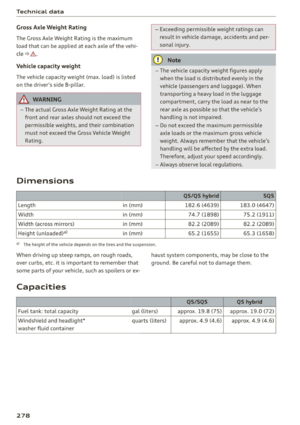 280
280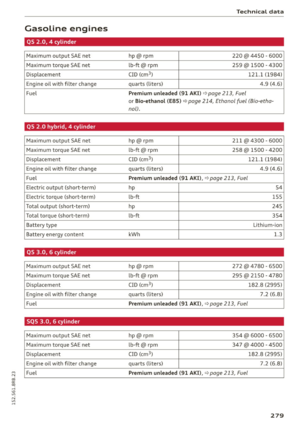 281
281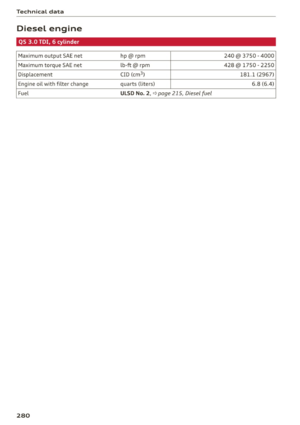 282
282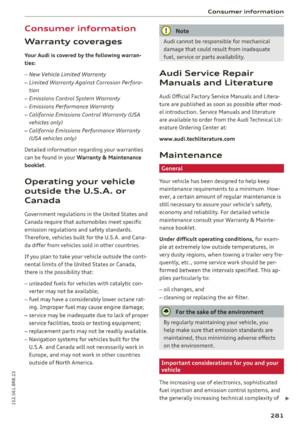 283
283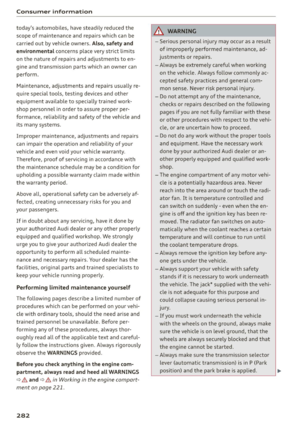 284
284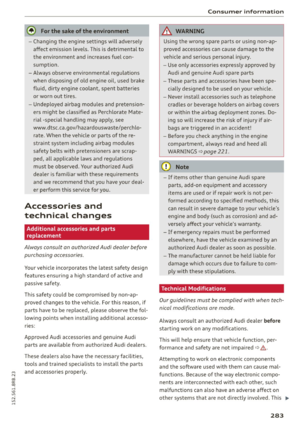 285
285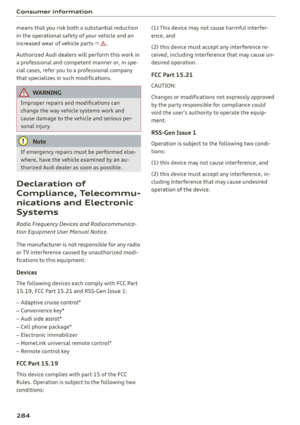 286
286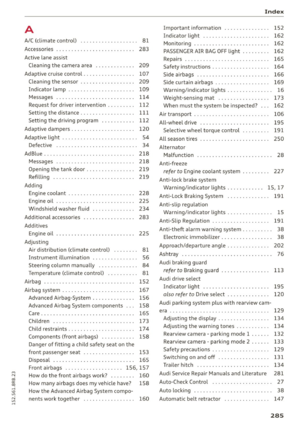 287
287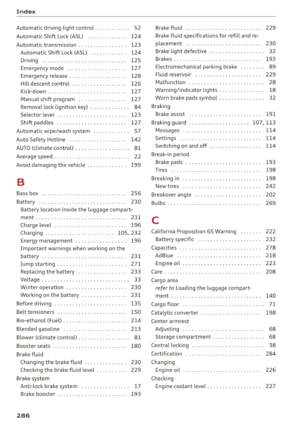 288
288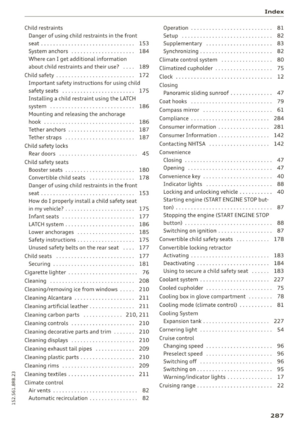 289
289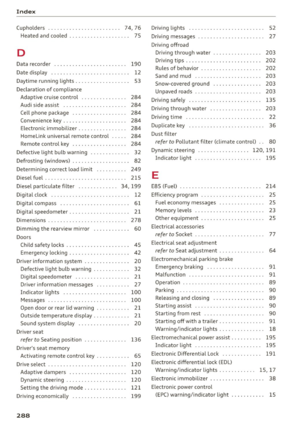 290
290 291
291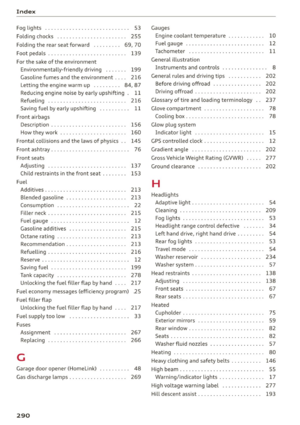 292
292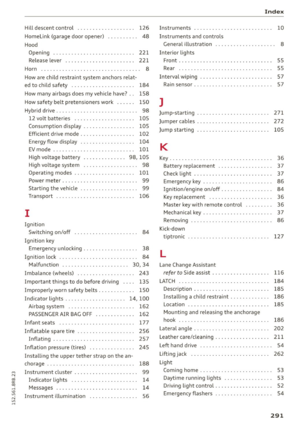 293
293 294
294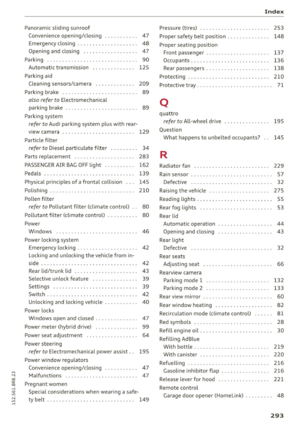 295
295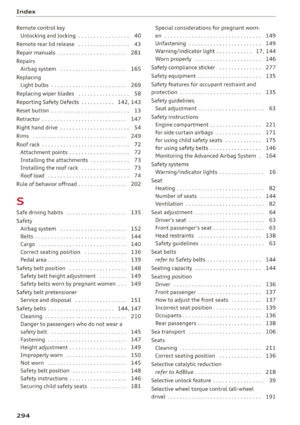 296
296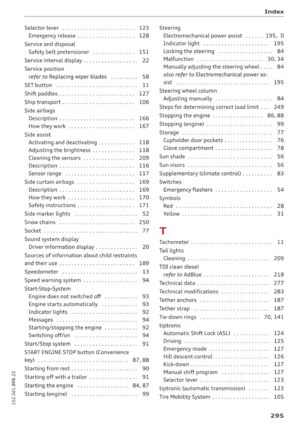 297
297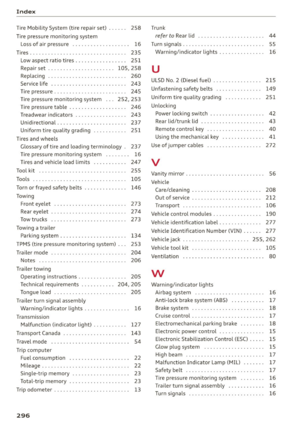 298
298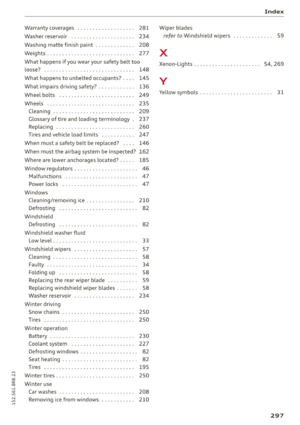 299
299 300
300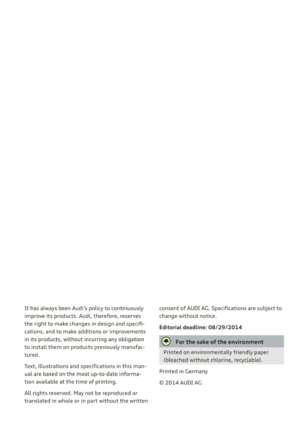 301
301






![AUDI Q5 2015 Owners Manual Wheels
Indicator lights
ti] Loss of pressure in at least one tire c::> &
Check the tires and replace or repa ir if necessary.
Check/correct the pressures of all four tires and
store AUDI Q5 2015 Owners Manual Wheels
Indicator lights
ti] Loss of pressure in at least one tire c::> &
Check the tires and replace or repa ir if necessary.
Check/correct the pressures of all four tires and
store](/manual-img/6/57635/w960_57635-255.png)